Inbox and Environment News Issue 462
August 16 - 22, 2020: Issue 462
Time Of Wiritjiribin - Tugarah Gunya'marri (Cold And Windy) August
The lyrebirds' calls ring out through the bushland as he builds his dancing mounds to attract his potential mates. It is the time of the flowering of the Marrai'uo (Acacia floribunda) which is a sign that the fish are running in the rivers. At the end of this time the Boo'kerrikin (Acacia decurrens) flower, which indicates the end of the cold, windy weather, and the beginning of the gentle spring rains.
Southern Right Whale Spotted Off Our Beaches: NPWS Reminds People To Stay Well Clear
Pictures Centre trail in Ku-ring-gai Chase National Park: Spring is happening! Photos taken on a lovely walk on Thursday August 13, 2020 by Joe Mills and Kevin Murray
Gary Clist photos of Avalon and Surrounds 1968-1970 - Pittwater Online News has recently been talking to ex-Avalon Beach resident Gary Clist. Gary lived here from 1955 on until moving north. He worked for John Stone (records, music and photography) as a teenager. John encouraged his interest in taking images - with the result that we can share with you some views of our area that will bring up memories for some and allow an insight into this place not yet seen for those born after this time.
Call For Pittwater Support To Save Koalas by Miranda Korzy
Katandra Season 2020
Katandra Bushland Sanctuary on Lane Cove Rd Ingleside is now open every Sunday until October 25, 10am-4pm. Visitors to this lovely bushland have recently seen Powerful and Boobook Owls, Swamp Wallabies and Lyrebirds. Visitors, please make a small donation towards management of this Crown Land reserve. More details: http://www.katandra.org/home.htm
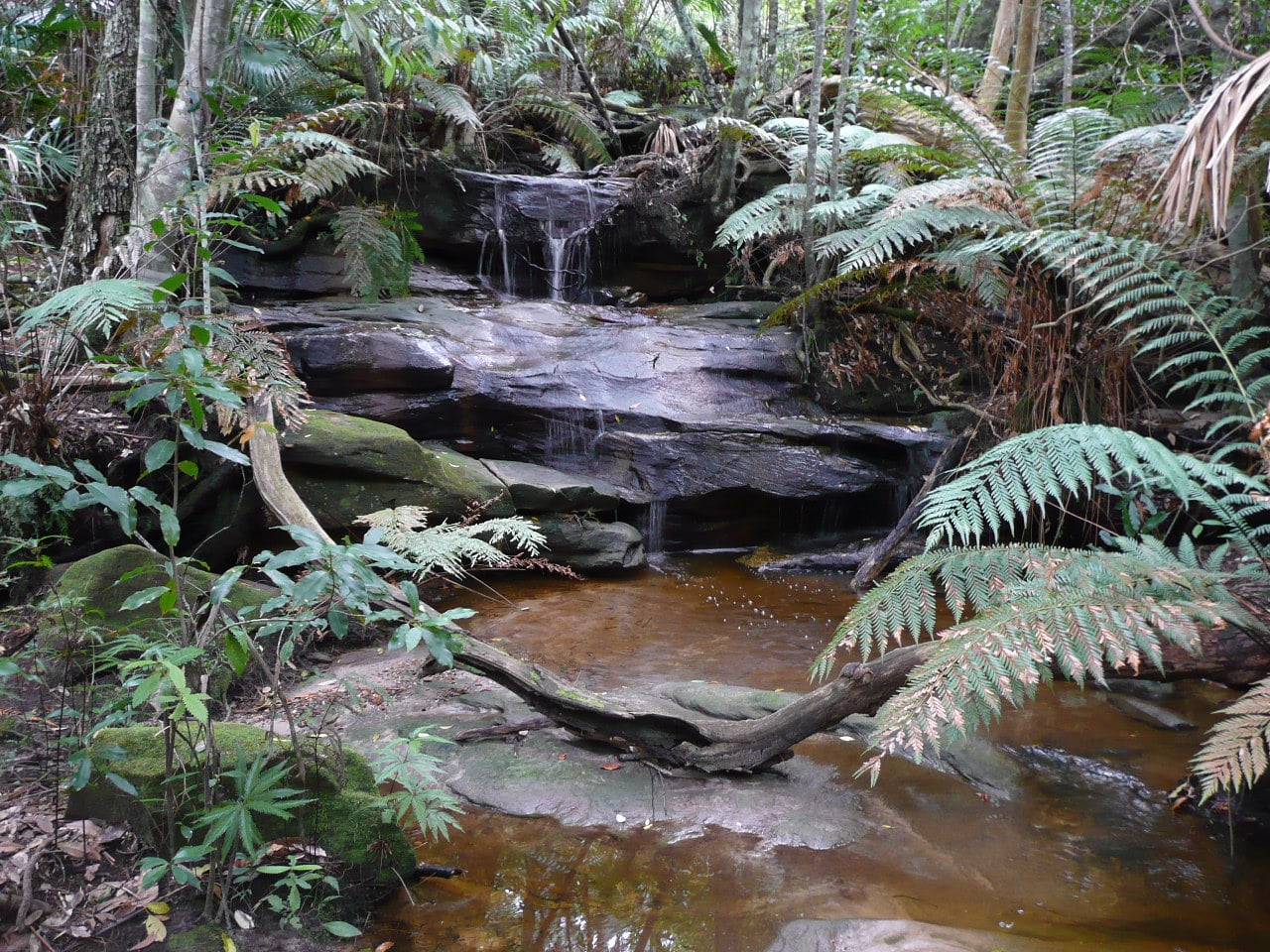
Several creeks flow down the escarpment - photo by Marita Macrae
Please Help Sydney Wildlife Rescue: Donate Your Cans And Bottles And Nominate SW As Recipient
You can Help Sydney Wildlife help Wildlife. Sydney Wildlife Rescue is now listed as a charity partner on the return and earn machines in these locations:
- Pittwater RSL Mona Vale
- Northern Beaches Indoor Sports Centre NBISC Warriewood
- Woolworths Balgowlah
- Belrose Super centre
- Coles Manly Vale
- Westfield Warringah Mall
- Strathfield Council Carpark
- Paddy's Markets Flemington Homebush West
- Woolworths Homebush West
- Bondi Campbell pde behind Beach Pavilion
- Westfield Bondi Junction car park level 2 eastern end Woolworths side under ramp
- UNSW Kensington
- Enviro Pak McEvoy street Alexandria.
Every bottle, can, or eligible container that is returned could be 10c donated to Sydney Wildlife.
Every item returned will make a difference by removing these items from landfill and raising funds for our 100% volunteer wildlife carers. All funds raised go to support wildlife.
It is easy to DONATE, just feed the items into the machine select DONATE and choose Sydney Wildlife Rescue. The SW initiative runs until August 23rd.
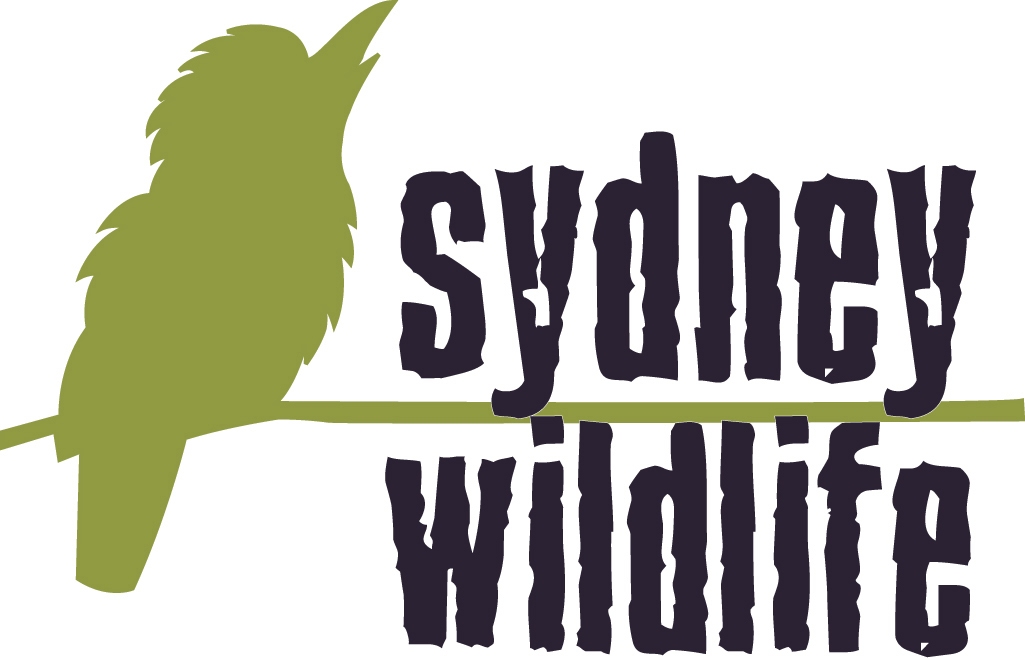
Bushcare In Pittwater
Where we work Which day What time
Avalon
Angophora Reserve 3rd Sunday 8:30 - 11:30am
Avalon Dunes 1st Sunday 8:30 - 11:30am
Avalon Golf Course 2nd Wednesday 3 - 5:30pm
Careel Creek 4th Saturday 8:30 - 11:30am
Toongari Reserve 3rd Saturday 9 - 12noon (8 - 11am in summer)
Bangalley Headland 2nd Sunday 9 to 12noon
Bayview
Winnererremy Bay 4th Sunday 9 to 12noon
Bilgola
North Bilgola Beach 3rd Monday 9 - 12noon
Algona Reserve 1st Saturday 9 - 12noon
Plateau Park 1st Friday 8:30 - 11:30am
Church Point
Browns Bay Reserve 1st Tuesday 9 - 12noon
McCarrs Creek Reserve Contact Bushcare Officer To be confirmed
Clareville
Old Wharf Reserve 3rd Saturday 8 - 11am
Elanora
Kundibah Reserve 4th Sunday 8:30 - 11:30am
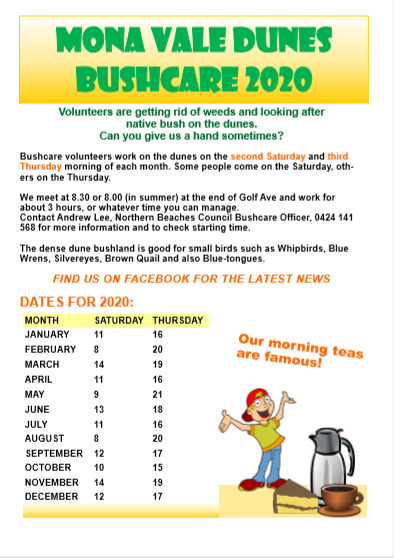 Mona Vale
Mona Vale Mona Vale Beach Basin 1st Saturday 8 - 11am
Mona Vale Dunes 2nd Saturday +3rd Thursday 8:30 - 11:30am
Newport
Bungan Beach 4th Sunday 9 - 12noon
Crescent Reserve 3rd Sunday 9 - 12noon
North Newport Beach 4th Saturday 8:30 - 11:30am
Porter Reserve 2nd Saturday 8 - 11am
North Narrabeen
Irrawong Reserve 2nd Saturday 2 - 5pm
Palm Beach
North Palm Beach Dunes 3rd Saturday 9 - 12noon
Scotland Island
Catherine Park 2nd Sunday 10 - 12:30pm
Elizabeth Park 1st Saturday 9 - 12noon
Pathilda Reserve 3rd Saturday 9 - 12noon
Warriewood
Warriewood Wetlands 1st Sunday 8:30 - 11:30am
Whale Beach
Norma Park 1st Friday 9 - 12noon
Western Foreshores
Coopers Point, Elvina Bay 2nd Sunday 10 - 1pm
Rocky Point, Elvina Bay 1st Monday 9 - 12noon
Gardens And Environment Groups And Organisations In Pittwater
Tick Population Booming In Our Area
Residents from Terrey Hills and Belrose to Narrabeen and Palm Beach report a high number of ticks are still present in the landscape. Local Veterinarians are stating there has not been the usual break from ticks so far and each day they’re still getting cases, especially in treating family dogs.
To help protect yourself and your family, you should:
- Use a chemical repellent with DEET, permethrin or picaridin.
- Wear light-colored protective clothing.
- Tuck pant legs into socks.
- Avoid tick-infested areas.
- Check yourself, your children, and your pets daily for ticks and carefully remove any ticks using a freezing agent.
- If you have a reaction, contact your GP for advice.
Who's Your Daddy? Male Seahorses Transport Nutrients To Embryos
August 13, 2020
New research by Dr Camilla Whittington and her team at the University of Sydney has found male seahorses transport nutrients to their developing babies during pregnancy. This discovery provides an opportunity for further comparative evolutionary research.
Seahorses and their relatives are the only vertebrates that have male pregnancy. The expectant fathers incubate developing babies inside a pocket called a "brood pouch." We know a male seahorse can have more than a thousand embryos in the pouch at once but until now, researchers had limited understanding of how the babies are fed.
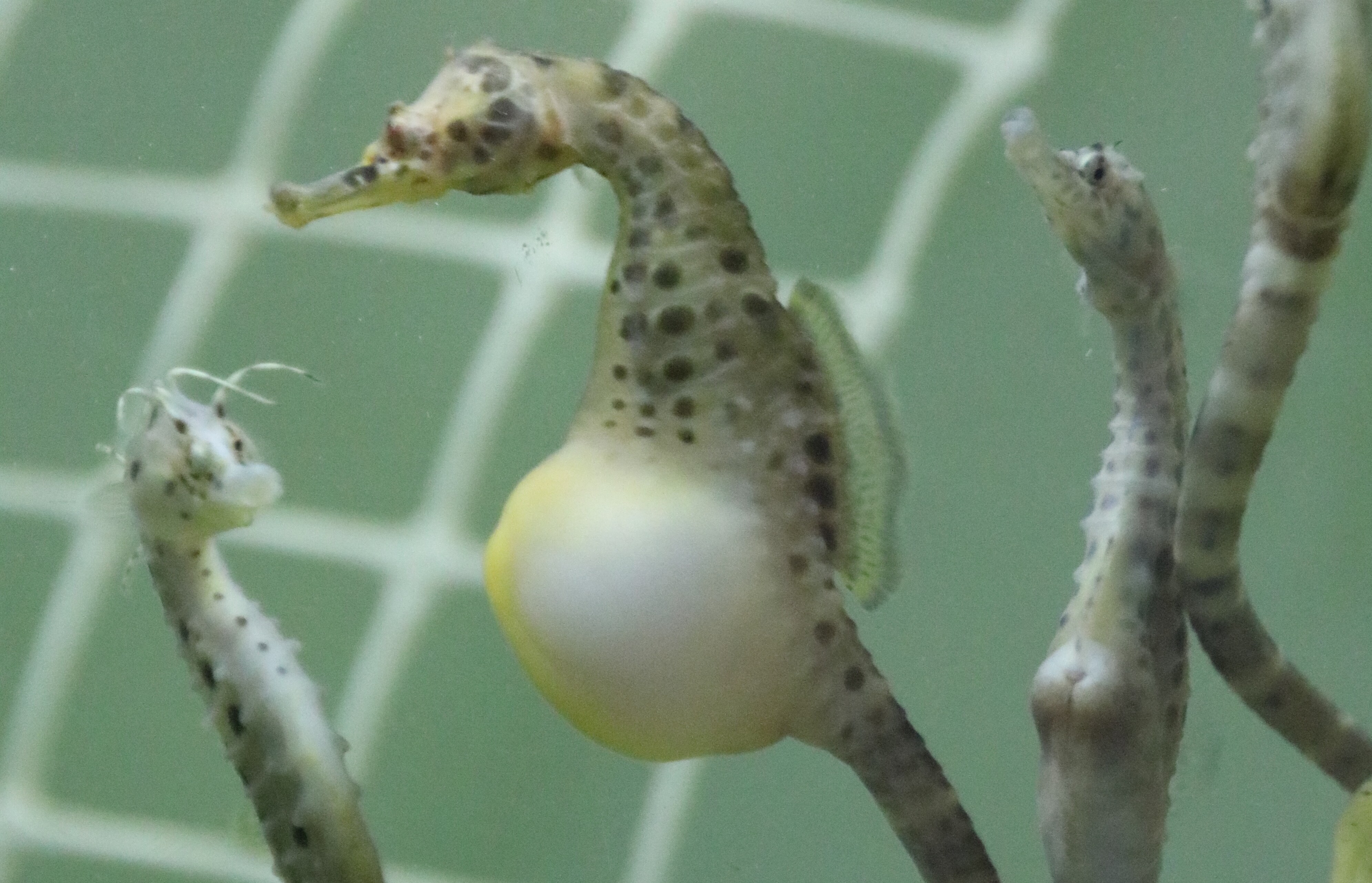
Male pot-bellied seahorse with females. Male seahorses have a large brood pouch used to incubate developing embryos. During courtship rituals, they pump water into the brood pouch until it reaches enormous dimensions, before the female transfers eggs into the pouch. Photo: Jacquie Herbert
"This work adds to the growing evidence that male pregnancy in seahorses could be as complex as female pregnancy in other animals, including ourselves," said Dr Whittington, from the School of Life and Environmental Sciences. "We now know that seahorse dads can transport nutrients to the babies during pregnancy, and we think they do this via a placenta. It's not exactly like a human placenta though -- they don't have an umbilical cord, for example. We need to do further histological work to confirm this."
Seahorses are emerging as important model species for understanding the evolution of live-bearing reproduction, said Dr Whittington.
"We can draw some parallels between seahorse pregnancy and human pregnancy," she said. "Seahorse dads seem to do some of the same things that human mums do, including transporting nutrients and oxygen to developing embryos, and immune modulation to protect the babies from infection."
The research published in Journal of Comparative Physiology B was led by University of Sydney Honours student Zoe Skalkos in collaboration with Dr James Van Dyke at La Trobe University.
The study builds on previous genetic evidence suggesting that male seahorses might transport nutrients to developing embryos. This new study confirms, in the first experimental evidence of 'patrotrophy' (nutrient transport from dad to babies). It also identified one of the classes of nutrients being transported: energy-rich fats.
"My team is using a range of techniques to investigate the biology of seahorse pregnancy," Dr Whittington said. "We want to understand more about the seahorse pouch and the ways it protects and supports the baby seahorses."
Honours student Zoe Skalkos, who led the research, said: "It's really exciting because it's a big step in understanding the relationship between dad and baby in male pregnancy."
Key Points:
- Seahorses and their relatives are the only vertebrates that have male pregnancy. Dads incubate developing babies inside a pocket called a "brood pouch."
- Male seahorses transport nutrients, including fats, to developing babies during pregnancy. The babies use these energy-rich fats for growth and development.
- The new results raise the question of whether seahorse embryos can influence how much nutrition they can get from dad while they are in the brood pouch.
Zoe M. G. Skalkos, James U. Van Dyke, Camilla M. Whittington. Paternal nutrient provisioning during male pregnancy in the seahorse Hippocampus abdominalis. Journal of Comparative Physiology B, 2020; DOI: 10.1007/s00360-020-01289-y
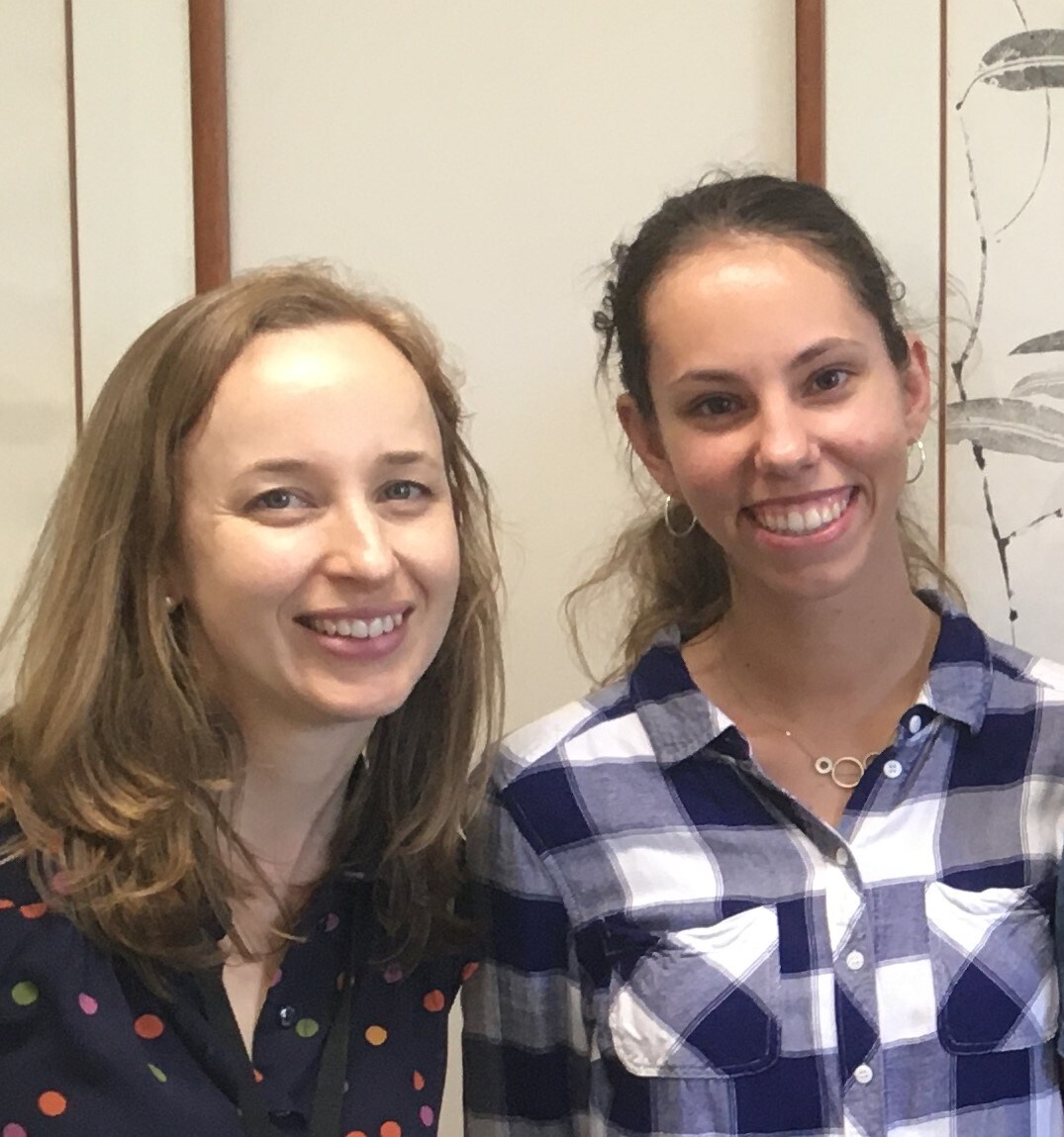
Dr Camilla Whittington and honours student Zoe Skalkos who led the research.
‘Name Game’ To Bring NSW’s Threatened Plants Into The Spotlight
August 14, 2020
The NSW Government Saving our Species program is calling on the NSW public to play the ‘name game’ and suggest new names for some of NSW’s lesser-known leafy, grassy and shrubbery threatened species.
NSW Department of Planning, Industry and Environment’s Threatened Species Conservation Manager Linda Bell said that 65% of the Australian native species at risk of extinction in New South Wales are plants, however they struggle to garner the same level of conservation attention and support as their cute and cuddly animal counterparts.
“While conservation of iconic species like the koala and the brush-tailed rock-wallaby will always be critically important, we cannot forget the crucial role our native plants play in the health of all ecosystems across New South Wales.
“The Saving our Species program has invested over $3.3 million to save over 230 threatened plants in the 2019-20 financial year, but we need the community to get behind our plant species too.
“Almost three quarters of these plants are known only by a scientific name, like Pterostylis riparia, a beautiful ground orchid found only in the Barrington Tops. These names are hard to pronounce and even trickier to remember, making it hard for these plants to find a place in the hearts and minds of our community.
“That’s why we’re asking everyone to get involved and suggest catchy, easy-to-pronounce names for 8 unnamed, but not unloved, threatened species found in New South Wales.
“This is your chance to make your mark on threatened species conservation in New South Wales. Whether the name means something to your community or your culture, suits the look of the species or just makes you smile, we want to hear from you.
“We’d especially love to hear name suggestions that recognise the living history of our Indigenous people and their connection to the land on which these threatened species are found,” said Ms Bell.
Submissions for the ‘Name Our Species’ competition are open now and will close on Friday 28 August. To enter, visit Be a champion of our unnamed, but not unloved, threatened species. Entries will be judged by a panel of threatened species experts from the Saving our Species program. Winners will be announced on Threatened Species Day, 7 September 2020 and will be featured on social media and the Saving our Species webpage throughout September.
The eight species on the hunt for a new name are:
- Nitella partita – algae found in north west NSW
- Acacia meiantha – wattle found in NSW central tablelands
- Acacia baueri subsp. Aspera – wattle found in the Blue Mountains
- Pterostylis ventricosa – orchid found in the Shoalhaven and Southern Highlands
- Diuris bracteata – orchid found between Sydney and the Central Coast
- Pterostylis riparia – orchid found in Barrington Tops
- Zieria odorifera ssp. Copelandii – shrub found in Mount Kaputar National Park
- Phebalium bifidum – shrub found in Capertee Valley
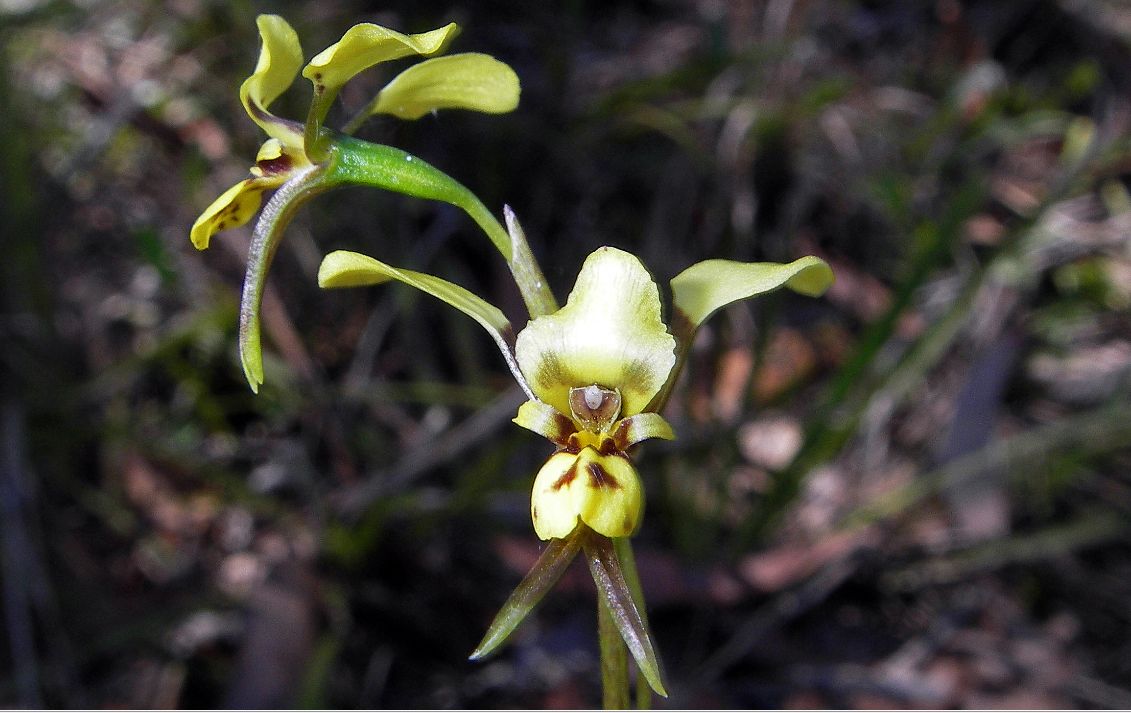
Diuris bracteata - OEH Photo
Funding Support For Coastal Councils: Grants
August 11, 2020
The latest round of funding under the NSW Government's Coastal and Estuary Grants Program has opened on 11 August 2020.
Minister for Local Government Shelley Hancock encouraged the State's 56 coastal councils to apply for funding to assist with planning and managing our State's coastline.
"Our coastline and estuaries are critical environments that support a huge variety of native flora and fauna in addition to being popular places for recreation," Mrs Hancock said.
"These grants will help councils plan for the future and protect and manage these unique natural assets."
There are 5 streams under the program: 1 for planning and studies which includes investigation, design and cost-benefit analysis and 4 for implementing works under each of the coastal management areas in the Coastal Management Act.
Works that have been funded under the program include coastal dune revegetation, wetland management, water quality monitoring as well as scoping studies for coastal management programs.
"This funding program is another example of how the NSW Government is supporting councils and their communities to protect their local environment," Mrs Hancock said.
The 2020-21 funding round for implementing works closes on 29 September 2020.
Councils are able to apply at any time during the 2020-21 financial year for funding planning and studies.
Further information and application forms are available here: Current coastal and estuary grants
Desperately Seeking Endangered Shrub Sightings
August 11, 2020
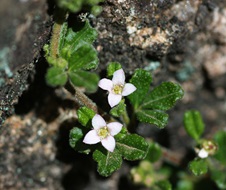 The search is on for an endangered plant, the beautiful Zieria obcordata, and residents in the central tablelands are being urged to be ready to report any sightings of this threatened species.
The search is on for an endangered plant, the beautiful Zieria obcordata, and residents in the central tablelands are being urged to be ready to report any sightings of this threatened species.
Native to New South Wales, Zieria obcordata is currently found in only two small populations near Wellington and Bathurst and they are about to bloom.
“This plant is special because it is found nowhere else in the world but the NSW central tablelands, and unfortunately it has been hit hard by the drought with less than 200 plants left in the wild,” said Darren Shelly, Senior Threatened Species Officer with the Department of Planning, Industry and the Environment.
“We think there might be more un-discovered populations of this Zieria on private properties between Wellington and Bathurst and we are asking for the local community’s help in reporting sightings of this rare plant.”
The Zieria obcordata is a small shrub, typically 10 to 40 centimetres high and can be identified by its dark green leaves composed of three wedge-shaped leaflets and its flowers, complete with four very small pale pink petals that fade rapidly to white.
“The plant usually flowers between August and October and grows on rocky hillsides or crevices between granite boulders, often in lines running downslope,” Mr Shelly said.
Local residents have already proved instrumental in ensuring the existing populations survived the recent drought and the plant’s other threats which include grazing by deer, goats and wallabies. Some members of the community have been volunteering for several years with the NSW Government’s Saving our Species program to save the Zieria obcordata.
The Central Tablelands Local Land Service (LLS) have also expressed interest in helping the Saving our Species team look for new populations of this threatened plant.
“There is a lot to say for the community spirit of the people of the central tablelands in protecting the environment in their local region and backyard and we are hoping residents will jump on board and also help the Zieria obcordata,” said Mr Shelly.
Sightings of the Zieria obcordata can be reported to – savingourspecies@environment.nsw.gov.au
For more information visit: Zieria obcordata
Photo in text: Zieria obcordata flowers Photo: Public Affairs/DPIE
NSW's First Hydrogen Project Gets Green Tick
August 12, 2020
The NSW Government has approved the development of the State’s first hydrogen gas facility at Horsley Park, paving the way for more clean energy, more jobs and an $18 million boost to the local economy.
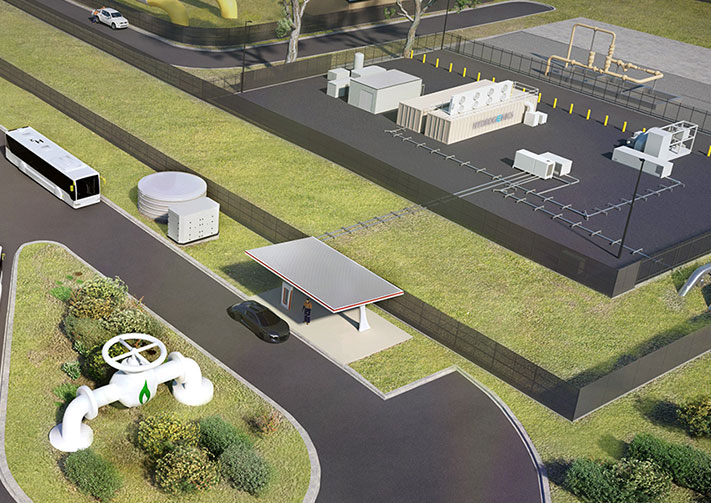
Planning and Public Spaces Minister Rob Stokes said the project will be the largest renewable gas trial in the country and could provide green gas to power Sydney’s homes and businesses in as little as five years if the trial is rolled out.
“The $18 million Western Sydney Green Gas Project will be a prototype for future green hydrogen projects,” Mr Stokes said.
“Hydrogen can revolutionise the fuel and gas industry, creating opportunities for low emissions technologies and jobs.”
The project will operate as a trial over five years to demonstrate the commercial feasibility of power-to-gas technology.
Energy Minister Matt Kean said the flagship project, delivered by Jemena and partially funded by the Australian Renewable Energy Agency, will inform the State’s transition to an economically and environmentally sustainable energy supply into the future.
“This will help to position NSW as a nation-leader in green gas supply and storage projects as we transition to a low carbon gas network,” Mr Kean said.
“It will also help us reach our ambitious aspiration of injecting 10 per cent hydrogen into our gas network by 2030.”
The project involves converting tap water and grid electricity from renewable sources into hydrogen gas. The hydrogen gas is then injected into the gas distribution network to supply homes, power buses and generate electricity.
Construction will commence in the next 3 months, with the facility due to be completed by early next year.
The Western Sydney Green Gas project is the latest to be determined through the NSW Government’s Planning System Acceleration Program that is keeping people in jobs and the economy moving during the COVID-19 pandemic.
To date, the program has created opportunities for 41,000 new jobs, injected $18.2 billion into the NSW economy and delivered 400 hectares of open space, parks and land for environmental conservation.
Return And Earn Reaches Four Billion Containers Returned
August 10, 2020
Environment Minister Matt Kean today congratulated communities across New South Wales for making the Return and Earn program a success with over four billion containers recycled through the scheme.
Mr Kean said that because of its design, the program has delivered tangible environmental, social and economic benefits to the people of NSW, including more than $10.4 million paid to not-for-profits and charities via donations.
“The latest research shows 75 per cent of residents have now participated in Return and Earn - this is a phenomenal achievement in less than three years,” Mr Kean said.
“It also highlights the importance of community-based return point operators like local newsagencies, corner stores and post offices.”
Return and Earn has provided opportunities for local business to get on board and realise the potential for commercial opportunities and local job creation.
In turn, local businesses have improved customer access by increasing the number of return points.
The benefits of the scheme for the environment and to the individual are clear: less material ending up as litter or landfill while being rewarded for each container returned.
“Benefitting from being part of the scheme are social enterprises like Vinnies which have set up their own return points and collected over 100 million containers,” Mr Kean said.
“This has created jobs for many people within communities, including those with disabilities and the long-term unemployed.”
The network of return points in NSW currently consists of 245 over-the-counter return points and 27 automated depots, alongside the 325 reverse vending machines.
Visit returnandearn.org.au for more information.
Science & Conservation Snapshot: Short-Tailed Shearwaters
August 15, 2020: Phillip Island Nature Parks
Herbicide Harming Marsupial Health And Development, Research Finds
August 6, 2020
The health of wallabies and kangaroos is being affected by the herbicide, atrazine, which is used widely in Australia on cereal crops and in forestation to prevent weeds, according to new research from the University of Melbourne.
Atrazine, which has been banned in the European Union since 2003, may be impacting reproduction in marsupials, the University of Melbourne study found, published today in Reproduction, Fertility and Development.
"Exposures to atrazine is causing major abnormalities in the male reproductive system in many animals, triggering male sterility or even male-to-female sex reversal in frogs," Professor in Genetics Andrew Pask said.
"With the marsupial's unique mode of reproduction and the young completing their development in the pouch, mothers are unknowingly passing the toxins on in their breast milk, exposing their young to environmental toxins."
The study is the first time the impacts of pesticides have been investigated in any marsupial and show that they are able to affect reproductive development.
The research found that concentrations of atrazine have been recorded at disturbingly high levels in Victorian rivers and Tasmanian streams immediately after forestry spraying.
Kangaroos and wallabies are at high risk because they eat the sprayed crops and drink from contaminated water resources where chemicals such as atrazine accumulate from run off.
Atrazine affects a broad range of animals from mammals such as rats to amphibians, reptiles and even fish.
With marsupials already experiencing devastating population declines across Australia, and 21 per cent of native mammals currently threatened with extinction, researchers say the potential impacts of environmental toxins are of major concern.
Researchers exposed the adult female tammar wallabies to atrazine contaminated water throughout pregnancy, birth and lactation to help establish the extent of harm being caused by the chemical.
They then examined the reproductive development of their young by assessing their growth and development.
Lead author on the research and PhD student Laura Cook said it is hoped the study will lead to more stringent guidelines around the use of atrazine in Australia.
"Endocrine-disrupting chemicals, such as atrazine, have the ability to impact development and increase disease susceptibility," she said.
"With increased habitat destruction, marsupials are being pushed onto farmland, attracted to the food resources and rare permanent water sources where they may be vulnerable to agricultural contaminants, such as pesticides."
Laura E. Cook, Yu Chen, Marilyn B. Renfree, Andrew J. Pask. Long-term maternal exposure to atrazine in the drinking water reduces penis length in the tammar wallaby Macropus eugenii. Reproduction, Fertility and Development, 2020; DOI: 10.1071/RD20158
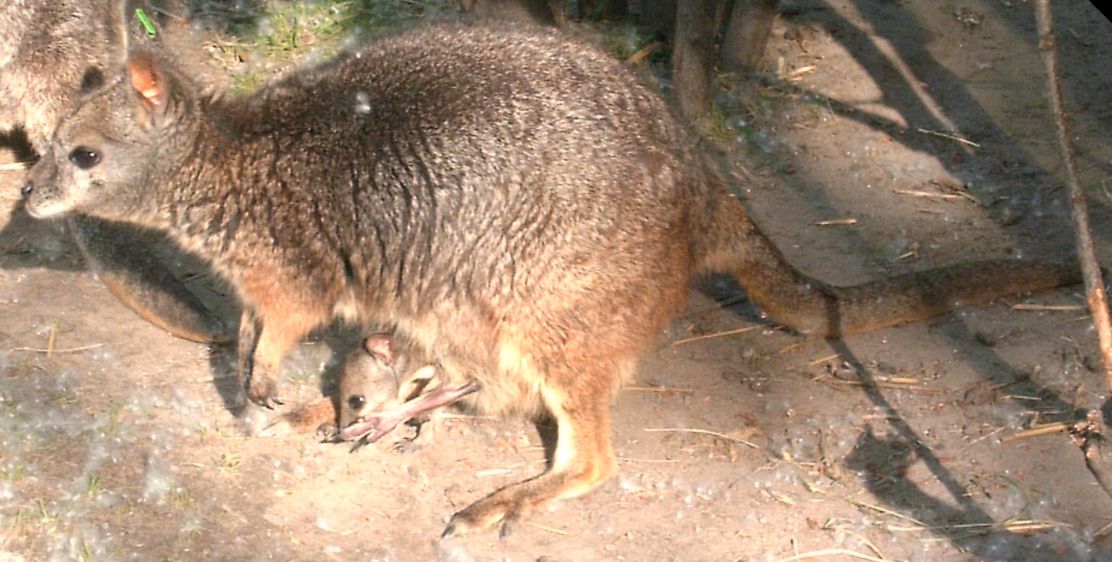
A female tammar wallaby with a joey in her pouch - photo by Mathae
Doodle Comer Swamp Nature Reserve Draft Plan Of Management: Public Consultation
The Doodle Comer Swamp Nature Reserve Draft Plan of Management is available for review and comment.
Public exhibition of the draft plan provides an important opportunity for members of the community to have a say in the future management of Doodle Comer Swamp Nature Reserve. Comments close 28 September 2020.
This plan has been prepared using a new format and presented as 2 separate documents:
- The plan of management which is the 'legal' document that will be provided to the Minister for formal adoption. This is the document we are seeking your feedback on.
- The planning considerations document supports the plan of management. It includes detailed information on park values (e.g. threatened species and cultural heritage) and threats to these values. A summary of this information is in the plan of management.
Doodle Comer Swamp Nature Reserve encompasses about half of the Doodle Comer Swamp, an ephemeral wetland listed in the National Directory of Important Wetlands and the largest wetland of its type in southern NSW. The catchment for Doodle Comer Swamp is unregulated and the wetland has an unaltered water flow regime, now uncommon in New South Wales inland wetlands and of high conservation value.
When inundated, Doodle Comer Swamp attracts large numbers of waterbirds that use the swamp for breeding and foraging. When dry, the wetland provides habitat for the threatened bush stone-curlew, listed as endangered in New South Wales. Other threatened animals found include brolga and superb parrot. The reserve contains several threatened ecological communities such as Inland Grey Box Woodland and Sandhill Pine Woodland.
Doodle Comer Swamp is part of the Country of the Wiradjuri speaking nation and is part of a larger network of swamps and lagoons across the Riverina that formed a significant part of the cultural landscape, sustaining the Wiradjuri with an extensive range of resources for thousands of years. A diverse range of Aboriginal sites exist in the reserve and surrounding area and in 2016 Doodle Comer was declared an Aboriginal place recognising these values and the wetland's special significance to Aboriginal culture.
What is a plan of management?
Parks and reserves established under the National Parks and Wildlife Act 1974 need to have a plan of management. The plan includes information on important park values and provides directions for future management. The plan of management is a legal document, and after the plan is adopted all operations and activities in the park must be in line with the plan. From time to time plans of management are amended to support changes to park management. Visit: Doodle Comer Swamp Nature Reserve Draft Plan of Management - PDF, 2.3MB
The National Parks and Wildlife Act sets out the matters that need to be considered when preparing a plan of management. These matters are addressed in the supporting Doodle Comer Swamp Nature Reserve Draft Plan of Management: Planning considerations document.
Why is a plan being prepared now?
Since the park`s reservation in 2011, it has been managed according to a statement of management intent. After a park's reservation and before the release of its plan of management, a statement of management intent is prepared outlining the management principles and priorities for the park's management. This statement documents the key values, threats and management directions for the park. It is not a statutory document and a plan of management will still need to be prepared according to the National Parks and Wildlife Act 1974.
Publication of a draft or final plan will replace the statement of management intent for the relevant parks covered.
What opportunities will the community have to comment?
The draft plan of management is on public exhibition until 28 September 2020 and anyone can review the plan of management and provide comments.
When will the plan of management be finalised?
At the end of the public exhibition period in September 2020 we will review all submissions, prepare a submissions report and make any necessary changes to the draft plan of management. The Far West Regional Advisory Committee and the National Parks and Wildlife Advisory Council will then review the plan along with the submissions and report, as required by the National Parks and Wildlife Act.
Once their input has been considered and any further changes made to the plan of management, we provide the plan to the Minister for Energy and Environment. The plan of management is finalised when the Minister formally adopts the plan under the National Parks and Wildlife Act. Once a plan is adopted it is published on the Department website and a public notice is advertised in the NSW Government Gazette.
How can I get more information about the draft plan?
For further information on the plan of management please contact the Park Management Planning Team at npws.parkplanning@environment.nsw.gov.au.
How can I comment on the draft plan?
Public exhibition for the plan of management is from 26 June 2020 until 28 September 2020. You are invited to comment on the draft plan by sending a written submission during this time.
Have your say
Public exhibition is from 26 June 2020 to 28 September 2020.
You can provide your written submission in any of the following ways:
Post your written submission to:
Manager Planning Evaluation and Assessment
Locked Bag 5022
Parramatta NSW 2124
Email your submission to: npws.parkplanning@environment.nsw.gov.au
Make a submission online by using the online form here
Tollingo Nature Reserve And Woggoon Nature Reserve Draft Plan Of Management: Public Consultation
The Tollingo Nature Reserve and Woggoon Nature Reserve Draft Plan of Management is available for review and comment.
Public exhibition of the draft plan provides an important opportunity for members of the community to have a say in the future management of Tollingo Nature Reserve and Woggoon Nature Reserve. Comments close 28 September 2020.
This plan has been prepared using a new format which is presented as two separate documents:
- The plan of management which is the legal document that will be provided to the Minister for formal adoption. This is the document we are seeking your feedback on.
- The planning considerations document supports the plan of management. It includes detailed information on park values (e.g. threatened species and cultural heritage) and threats to these values. A summary of this information is provided in the plan of management.
Tollingo Nature Reserve and Woggoon Nature Reserve are significant as two of the largest remaining mallee remnants in New South Wales. The largely intact old-age mallee vegetation is rare in the Central West, which is mostly used for agriculture. The reserves provide habitat for the endangered malleefowl and other native animals.
Tollingo Nature Reserve is shared Country for the Ngiyampaa and Wiradjuri people, while Woggoon Nature Reserve is within Wiradjuri traditional Country.
What is a plan of management?
Parks and reserves established under the National Parks and Wildlife Act 1974 need to have a plan of management. The plan includes information on important park values and provides directions for future management. The plan of management is a legal document, and after the plan is adopted all operations and activities in the park must be in line with the plan. From time to time plans of management are amended to support changes to park management.
The National Parks and Wildlife Act sets out the matters that need to be considered when preparing a plan of management. These matters are addressed in the supporting Tollingo Nature Reserve and Woggoon Nature Reserve Draft Planning Considerations document. This document may be updated from time to time, for example, to include new information on the values of the park (e.g. new threatened species), new management approaches (e.g. a new pest management technique) or new park programs. Visit Tollingo Nature Reserve and Woggoon Nature Reserve Draft Plan of Management - PDF 2.3MB
Why is a plan being prepared now?
This plan of management will replace the statement of management intent which was approved in 2014. Statements of management intent are non-statutory documents which summarise the key values and management directions for a park.
Since reservation in 1988 and 1974 respectively, Tollingo and Woggoon nature reserves have been managed according to a statement of management intent. After a park's reservation and before the release of its plan of management, a statement of management intent is prepared outlining the management principles and priorities for the park's management. This statement documents the key values, threats and management directions for the park. It is not a statutory document and a plan of management will still need to be prepared according to the National Parks and Wildlife Act 1974. Publication of a draft or final plan will replace the statements of management intent for the relevant parks covered.
What opportunities will the community have to comment?
The draft plan of management and planning considerations are on public exhibition until 28 September 2020 and anyone can provide comments.
When will the plan of management be finalised?
At the end of the public exhibition period in September 2020, National Parks and Wildlife Service (NPWS) will review all submissions, prepare a submissions report and make any necessary changes to the draft plan of management. The West Regional Advisory Committee and the National Parks and Wildlife Advisory Council will then review the plan along with the submissions and report, as required by the National Parks and Wildlife Act.
Once their input has been considered and any further changes made to the plan of management, we provide the plan to the Minister for Energy and Environment. The plan of management is finalised when the Minister adopts the plan under the National Parks and Wildlife Act. Once a plan is adopted it is published on the Department's website.
How can I get more information about the draft plan?
For further information on the plan of management please contact the NPWS Park Management Planning Team at npws.parkplanning@environment.nsw.gov.au
Where can I see a printed copy of the draft plan?
Hard copies are available for viewing at the following locations:
- National Parks and Wildlife Service (NPWS) office, Camp Street, Forbes
- Condobolin Library, 130 Bathurst Street, Condobolin
How can I comment on the draft plan?
Public exhibition for the plan of management is from 26 June until 28 September 2020. You are invited to comment on the draft plan by sending a written submission during this time.
Your privacy
Your submission will be provided to a number of statutory advisory bodies (including the relevant regional advisory committee and the National Parks and Wildlife Advisory Council). Your comments on the draft plan may include 'personal information'. the Department complies with the NSW Privacy and Personal Information Protection Act 1998 which regulates the collection, storage, access, amendment, use and disclosure of personal information. See our privacy webpage for details. Information that in some way identifies you may be gathered when you use our website or send us correspondence.
If an application to access information under the Government Information (Public Access) Act 2009 requests access to your submission, your views about release will be sought if you have indicated that you object to your submission being made public.
While all submissions count, they are most effective when we understand your ideas and the outcomes you want for park management. Some suggestions to help you write your submission are:
- Write clearly and be specific about the issues that are of concern to you.
- Note which part or section of the plan your comments relate to.
- Give reasoning in support of your points – this makes it easier for us to consider your ideas and will help avoid misinterpretation.
- Tell us specifically what you agree/disagree with and why you agree/disagree.
- Suggest solutions or alternatives to managing the issue if you can.
Have your say
Public exhibition is from 26 June 2020 to 28 September 2020.
You can provide your written submission in any of the following ways:
Post your written submission to:
Manager Planning Evaluation and Assessment
Locked Bag 5022
Parramatta NSW 2124
Email your submission to: npws.parkplanning@environment.nsw.gov.au
Make a submission online by using the online form here
Limeburners Creek National Park, Goolawah National Park And Goolawah Regional Park: Public Consultation
Planning for the future –NSW National Parks and Wildlife Service is preparing a new plan of management for Limeburners Creek National Park, Goolawah National Park and Goolawah Regional Park.
These parks are in the traditional Country of the Dunghutti and Birpai Aboriginal Peoples. The parks play a fundamental role in the lives of local Aboriginal people, helping to maintain a tangible link to the past and enabling continued connections to Country.
The existing plan of management for Limeburners Creek National Park was written in 1998. The areas that are now Goolawah National Park and Goolawah Regional Park were formerly Goolawah State Park and Crown land. Initial community consultation about the Goolawah parks was undertaken in 2012, soon after they were transferred to National Parks and Wildlife Service.
Since this time large new areas have been added to the parks, including the intertidal zone on some of the beaches. There has also been a steady increase in visitors, and new recreational uses have become popular. Information about the values of the park has improved and new approaches to managing fire, pests and weeds have been developed.
Accommodating all of these visitors, maintaining the unique visitor experience and protecting the environment is challenging. Good planning is essential to manage increasing demand and provide sustainable visitor facilities and opportunities while minimising impacts and retaining the natural and low key nature of this beautiful stretch of coast. The development of a new combined plan of management will help to protect the parks' unique values and improve the effectiveness of how we manage the parks.
What opportunities will the community have to contribute to the development of a new plan of management?
Previous consultation, including a community forum, identified a range of issues important to the local community which will be considered in the new plan. It is now time to reach out and reconnect with our neighbours, stakeholders and local communities, as well as extending the invitation to the wider community of park users.
There are now 2 opportunities to be involved in the development of the plan of management for Goolawah Regional Park and Goolawah and Limeburners Creek national parks:
- During the development of the draft plan - register your interest below to receive updates and be notified of further consultation dates. Complete the form to provide your ideas on what you believe are the most important values of the parks and how they should be managed in the future. Your input will be used to draft a plan that reflects community values and aspirations.
- During public exhibition of the draft plan - there will be another opportunity to have your say when the draft plan of management is completed and put on public exhibition for 90 days. Anyone can submit comments on the draft plan during this time.
Register your interest
Complete the online form here to register your interest, provide initial input and be notified of further consultation dates. Tell us what is important to you about the parks and what you would like to see in the future. Comments close 30 October 2020.
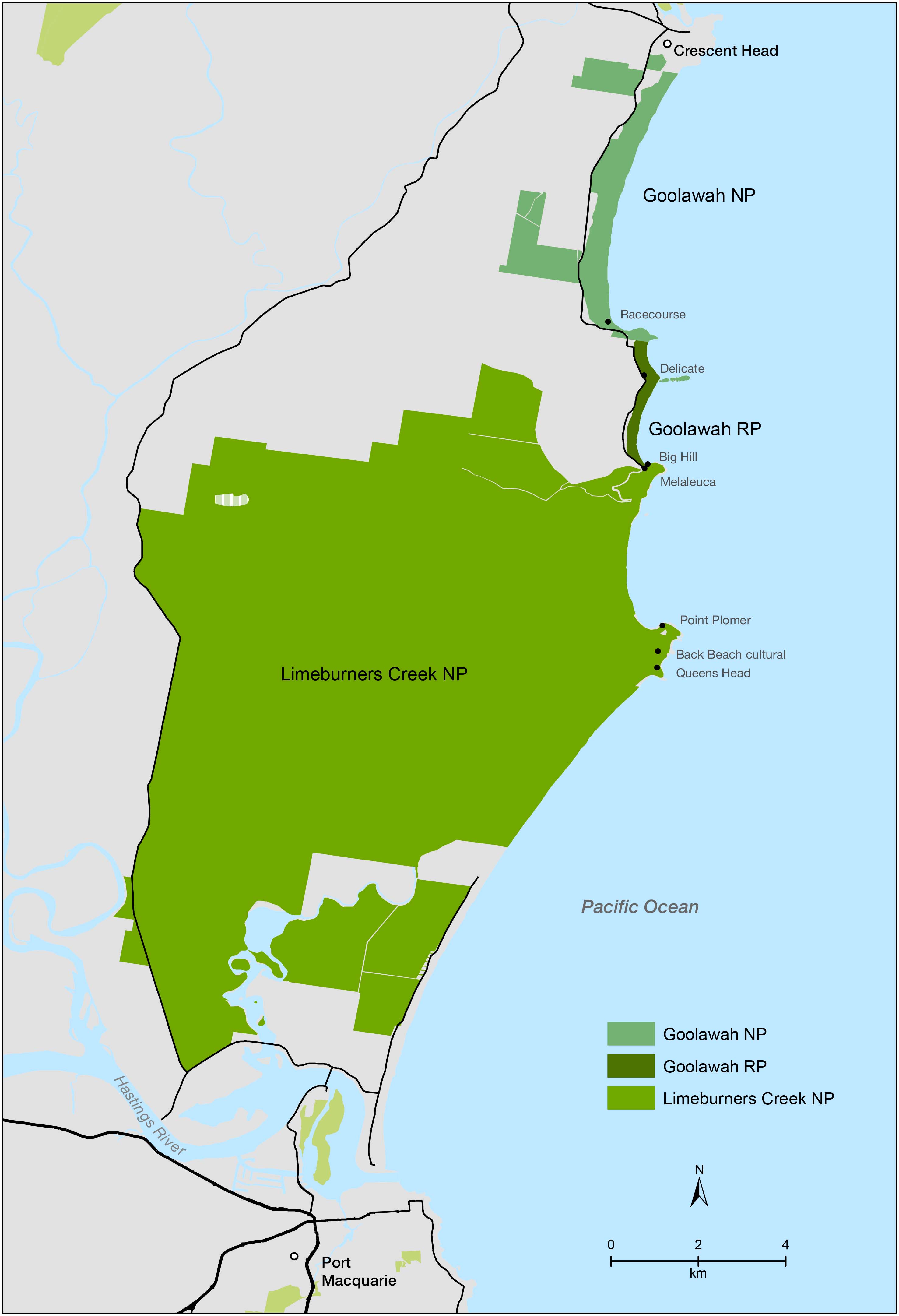
Limeburners Creek National Park, Goolawah National Park and Goolawah Regional Park engagement map Photo: DPIE
Rat Poisons Are Killing Our Wildlife: Alternatives
BirdLife Australia is currently running a campaign highlighting the devastation being caused by poison to our wildlife. Rodentcides are an acknowledged but under-researched source of threat to many Aussie birds. If you missed BirdLife's rodenticide talk but would like to know more, share data and comment on the use of rodenticides in Australia please visit: https://www.actforbirds.org/ratpoison
Owls, kites and other birds of prey are dying from eating rats and mice that have ingested Second Generation rodent poisons. These household products – including Talon, Fast Action RatSak and The Big Cheese Fast Action brand rat and mice bait – have been banned from general public sale in the US, Canada and EU, but are available from supermarkets throughout Australia.
Australia is reviewing the use of these dangerous chemicals right now and you can make a submission to help get them off supermarket shelves and make sure only licenced operators can use them.
There are alternatives for household rodent control – find out more about the impacts of rat poison on our birds of prey and what you can do at the link above and by reading the information below.
Let’s get rat poison out of bird food chains.
The Australian Pesticides and Veterinary Medicines Authority (APVMA) – is currently asking Australians for their views on how rodent poisons are regulated.
Have your say by making a submission here.
Powerful Owl at Clareville - photo by Paul Wheeler
Pesticides that are designed to control pests such as mice and rats cane also kill our wildlife through either primary or secondary poisoning. Insecticides include pesticides (substances used to kill insects), rodenticides (substances used to kill rodents, such as rat poison), molluscicides (substances used to kill molluscs, such as snail baits), and herbicides (substances used to kill weeds).
Primary poisoning occurs when an animal ingests a pesticide directly – for example, a brushtail possum or antechinus eating rat bait. Secondary poisoning occurs when an animal eats another animal that has itself ingested a pesticide – for example, a greater sooty owl eating a rate that has been poisoned or an antechinus that had eaten rat bait.
Rodenticides are the most common and harmful pesticides to Australian wildlife. Though no comprehensive monitoring of non-target exposure of rodenticides has been conducted, numerous studies have documented the harm rodenticides do to native animals. In 2018, an Australian study found that anticoagulant rodenticides in particular are implicated in non-target wildlife poisoning in Australia, and warned Australia’s usage patterns and lax regulations “may increase the risk of non-target poisoning”.
Most rodenticides work by disrupting the normal coagulation (blood clotting) process, and are classified as either “first generation” / “multiple dose” or “second generation” / “single dose”, depending on how many doses are required for the poison to be lethal.
These anticoagulant rodenticides cause victims of anticoagulant rodenticides to suffer greatly before dying, as they work by inhibiting Vitamin K in the body, therefore disrupting the normal coagulation process. This results in poisoned animals suffering from uncontrolled bleeding or haemorrhaging, either spontaneously or from cuts or scratches. In the case of internally haemorrhaging, which is difficult to spot, the only sign of poisoning is that the animal is weak, or (occasionally) bleeding from the nose or mouth. Affected wildlife are also more likely to crash into structures and vehicles, and be killed by predators.
An animal has to eat a first generation rodenticide (e.g. warfarin, pindone, chlorophaninone, diphacinone) more than once in order to obtain a lethal dose. For this reason, second generation rodenticides (e.g. difenacoum, brodifacoum, bromadiolone and difethialone) are the most commonly used rodenticides. Second generation rodenticides only require a single dose to be consumed in order to be lethal, yet kill the animal slowly, meaning the animal keeps coming back. This results in the animal consuming many times more poison than a single lethal dose over the multiple days it takes them to die, during which time they are easy but lethal prey to predators. This is why second generation poisons tend to be much more acutely toxic to non-target wildlife, as they are much more likely to bioaccumulate and biomagnify, and clear very slowly from the body.
Species most at risk from poisons
Small Mammals
Small mammals including possums and bandicoots often consume poisons such as snail bait, or rat bait that has been laid out to attract and kill rats, mice, and rabbits. Poisons such as pindone are often added to oats or carrots, and lead to a slow, painful death of internal bleeding. Australian possums often consume rat bait such as warfarin, which causes extensive internal bleeding, usually resulting in death.
There is a very poor chance of survival. Possums are also known to consume slug bait, which results in a prolonged painful death mainly from neurological effects. There is no treatment.
Small mammals can also be poisoned by insecticides. Possums, for example, can ingest these poisons when consuming fruit from a tree that has been sprayed with insecticide. Rescued by a WIRES carer, the brushtail possum joey pictured below was suffering from suspected insecticide poisoning. Though coughing up blood, luckily the joey did not ingest a lethal dose as he survived in care and was later released.
Large Mammals
Despite their size, large mammals including wallabies, kangaroos and wombats can also fall victim to pesticide poisoning. Wallabies and kangaroos have been known to suffer from rodenticide poisoning, while poisons often ingested by wombats include rat bait from farm sheds, and sodium fluroacetate (1080) laid out to kill pests such as cats and foxes.
Australian mammals are also impacted by the use of insecticides. DDT, although a banned substance, has been reported as killing marsupials.
Birds
Birds have a high metabolic rate and therefore succumb quickly to poisons. Australian birds of prey – owls (such as the southern boobook) and diurnal raptors (such as kestrels) – can be killed by internal bleeding when they eat rodents that have ingested rat bait. A 2018 Western Australian study determined that 73% of southern boobook owls found dead or were found to have anticoagulant rodenticides in their systems, and that raptors with larger home ranges and more mammal-based diets may be at a greater risk of anticoagulant rodenticide exposure.
Insectivorous birds will often eat insects sprayed with insecticides, and a few different species of birds may be affected at the same time. Unfortunately little can be done and death most often results.
Organophosphates are the most widely used insecticide in Australia. Birds are very susceptible to organophosphates, which are nerve toxins that damage the nervous system, with poisoning occurring through the skin, inhalation, and ingestion. Organophosphates can cause secondary poisoning in wild birds which ingest sprayed insects. Often various species of insectivorous birds are affected at the same time as they come down to eat the dying insects. After a bird is poisoned, death usually occurs rapidly. Raptors have also been deliberately or inadvertently poisoned when organophosphates have been applied to a carcass to poison crows.
Organochlorine pesticides (OCPs) are persistent, bio-accumulative pesticides that include DDT, dieldrin, heptachlor and chlordane. OPC’s have been used extensively in the agriculture industry since the 1940s. Some of the more common product names include Hortico Dieldrin Dust, Shell Dieldrex and Yates Garden Dust. Although no OCP’s are currently registered for use in the home environment in Australia, many of these products still remain in use on farms, in business premises and households. OCP poisons remain highly toxic in the environment for many years impacting on humans, animals, birds and especially aquatic life. They can have serious short-term and long-term impacts at low concentrations. In addition, non-lethal effects such as immune system and reproductive damage of some of these pesticides may also be significant. Birds are particularly sensitive to these pesticides, and there have even been occasions where the deliberate poisoning of birds has occurred. Tawny frogmouths are most often poisoned with OCP’s. The poisons are stored in fat deposits and gradually increase over time. At times of food scarcity, or during any stressful period, such as breeding season or any changes to their environment, the fat stores are metabolised, and with it, the poison load in their blood streams reaches acute levels, causing death.
Although herbicides, or weed killers, are designed to kill plants, some are toxic to birds. Common herbicide glyphosate (Roundup) will cause severe eye irritation in birds if they come into contact with the spray. Herbicides also have the impact of removing food plants that birds, or their insect food supply, rely on. Birds can also readily fall victim to snail baits, either via primary or secondary poisoning.
Reptiles and Amphibians
As vertebrate species, reptiles and amphibians are also at risk of pesticides. Though less is known about the effects of pesticides on reptiles and amphibians, these animals have been known to fall victim to pesticide poisoning. Blue-tongue lizards, for example, often consume rat bait and die of internal bleeding. A 2018 Australian study also found that reptiles may be important vectors (transporters) of rodenticides in Australia.
How to keep pests away and keep wildlife safe
Remember, pesticides are formulated to be tasty and alluring to the target species, but other species find them enticing, too. It is safest for wildlife, pets and people for us to not use any pesticides, and prevent or deter the presence of pests practically, rather than attempt to eliminate them chemically.
Tips to prevent and deter wildlife deaths from poisoning:
- Deter rats and mice around your property by simply cleaning up; removing rubbish, keeping animal feed well contained and indoors, picking up fallen fruits and vegetation, and using chicken feeders removes potential food sources.
- Seal up holes and in your walls and roof to reduce the amount of rodent-friendly habitat in your house.
- Replace palms with native trees; palm trees are a favourite hideout for black rats, while native trees provide ideal habitat for native predators like owls and hawks which help to control rodent populations.
- Set traps with care in a safe, covered spot, away from the reach of children, pets and wildlife. Two of the most effective yet safe baits are peanut butter and pumpkin seeds.
- To control slugs, terracotta or ceramic plant pots can be placed upside down in the garden or aviary. Slugs and snails will seek the dark, damp area this creates, and can be collected daily. They can then be drowned in a jar of soapy water. You can also sink a jar or dish into the soil and fill it with beer. The slugs are attracted to the yeast in the beer, fall in and then drown.
If turning to pesticides as a last resort:
- Use only animal-safe slug baits.
- Place tamper-proof bait stations out of reach of wildlife.
- Avoid using loose whether pellets or poison grain, present the highest risk, the latter being particularly attractive to seed-eating birds and to many small mammal species.
- Read the label and use as instructed.
- Avoid products containing second generation products difenacoum, brodifacoum, bromadiolone and difethialone, which are long-lasting and much more likely to unintentionally poison wildlife via secondary poisoning.
- Cover individual fruits when spraying fruit trees with insecticides.
Poisons kill dogs too
Because of their poisonous nature, pesticides pose a risk to animals and people alike, including pets and children. Roaming pets like cats and dogs are most at risk of being poisoned, with one 2016 study at the Norwegian University of Life Sciences finding that one in five dogs had rat poison in its body, and a 2011 study by the Humane Society in the United States finding that 74% of their pet poisoning cases are due to second-generation anticoagulants such as rat baits.
It is best to avoid the use of all pesticides, or otherwise use them sparingly, carefully and only after researching each poison and its correct usage. Always supervise pets and children, keep poisons locked out of their reach, and be vigilant in public spaces where pesticides may have accumulated, e.g. poisons can accumulate in streams or puddles where herbicides have recently been sprayed.
If you suspect your pet has been poisoned, seek veterinary help immediately.
If you suspect your child or another adult has been poisoned, do not induce vomiting and call the NSW Poisons Information Centre on 13 11 26 for 24/7 medical advice, Australia-wide.
References
Lohr, M. T. & Davis, R. A. 2018, Anticoagulant rodenticide use, non-target impacts and regulation: A case study from Australia, Science of The Total Environment, vol. 634, pp. 1372-1384.
Lohr, M. T. 2018, Anticoagulant rodenticide exposure in an Australian predatory bird increases with proximity to developed habitat, Science of The Total Environment, Volume 643, pp.134-144.
Lohr, M. T. 2018, Anticoagulant Rodenticides: Implications for Wildlife Rehabilitation, conference paper, Australian Wildlife Rehabiliation Conference, awrc.org.au
Olerud, S., Pedersen, J. & Kull, E. P. 2009, Prevalence of superwarfarins in dogs – a survey of background levels in liver samples of autopsied dogs. Norwegian University of Life Sciences, Faculty of Veterinary Medicine and Life Sciences, Department of Sports and Family Animal Medicine, Section for Small Animal Diseases.
Healthy Wildlife, Healthy Lives, 2017, Rodenticides and Wildlife, healthywildlife.com.au
Society for the Preservation of Raptors Inc. 2019, Raptor Fact Sheet: Eliminate Rats and Mice, Not Wildlife!, raptor.org.au/factsheetpests.pdf
W.I.R.E.S. Poisons and baits don't just kill rats.
.jpg?timestamp=1590728675788)
Barking Owl (Ninox connivens connivens)- photo by Julie Edgley - this nocturnal animal will eat mice and so become a victim of poisons through them
Echidna Season
Echidna season has begun. As cooler days approach, our beautiful echidnas are more active during the days as they come out to forage for food and find a mate. This sadly results in a HIGH number of vehicle hits.
What to do if you find an Echidna on the road?
- Safely remove the Echidna off the road (providing its safe to do so).
- Call Sydney Wildlife or WIRES
- Search the surrounding area for a puggle (baby echidna). The impact from a vehicle incident can cause a puggle to roll long distances from mum, so please search for these babies, they can look like a pinky-grey clump of clay
What to do if you find an echidna in your yard?
- Leave the Echidna alone, remove the threat (usually a family pet) and let the Echidna move away in it's own time. It will move along when it doesn't feel threatened.
If you find an injured echidna or one in an undesirable location, please call Sydney Wildlife on 9413 4300 for advice.
www.sydneywildlife.org.au
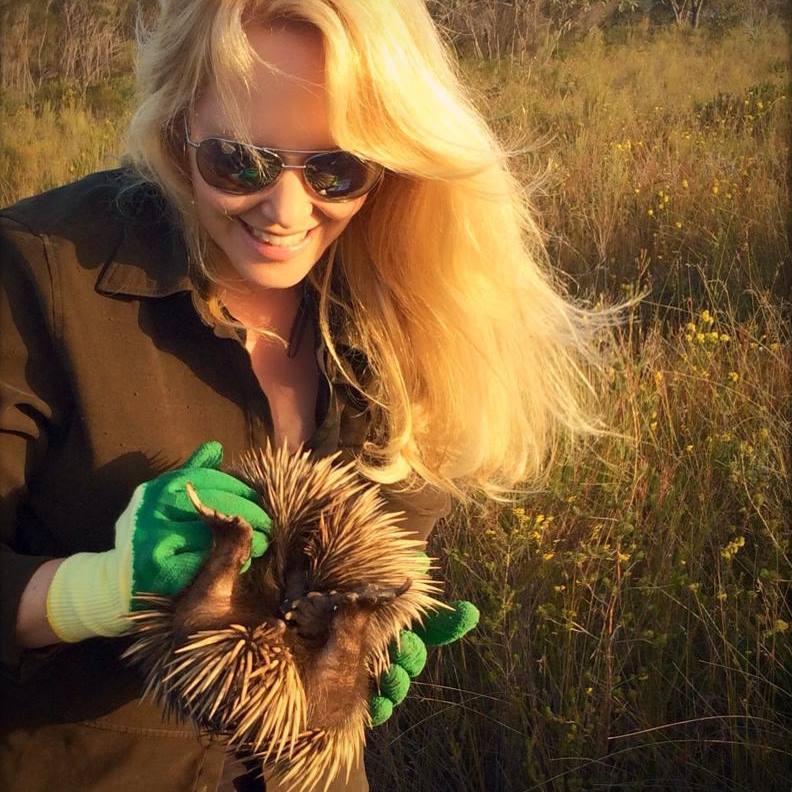
Lynleigh Greig, Sydney Wildlife, with a rescued echidna being returned to its home
 New Shorebird Identification Booklet
New Shorebird Identification Booklet
The Migratory Shorebird Program has just released the third edition of its hugely popular Shorebird Identification Booklet. The team has thoroughly revised and updated this pocket-sized companion for all shorebird counters and interested birders, with lots of useful information on our most common shorebirds, key identification features, sighting distribution maps and short articles on some of BirdLife’s shorebird activities.
The booklet can be downloaded here in PDF file format: http://www.birdlife.org.au/documents/Shorebird_ID_Booklet_V3.pdf
Paper copies can be ordered as well, see http://www.birdlife.org.au/projects/shorebirds-2020/counter-resources for details.
Download BirdLife Australia's children’s education kit to help them learn more about our wading birdlife
Shorebirds are a group of wading birds that can be found feeding on swamps, tidal mudflats, estuaries, beaches and open country. For many people, shorebirds are just those brown birds feeding a long way out on the mud but they are actually a remarkably diverse collection of birds including stilts, sandpipers, snipe, curlews, godwits, plovers and oystercatchers. Each species is superbly adapted to suit its preferred habitat. The Red-necked Stint is as small as a sparrow, with relatively short legs and bill that it pecks food from the surface of the mud with, whereas the Eastern Curlew is over two feet long with a exceptionally long legs and a massively curved beak that it thrusts deep down into the mud to pull out crabs, worms and other creatures hidden below the surface.
Some shorebirds are fairly drab in plumage, especially when they are visiting Australia in their non-breeding season, but when they migrate to their Arctic nesting grounds, they develop a vibrant flush of bright colours to attract a mate. We have 37 types of shorebirds that annually migrate to Australia on some of the most lengthy and arduous journeys in the animal kingdom, but there are also 18 shorebirds that call Australia home all year round.
What all our shorebirds have in common—be they large or small, seasoned traveller or homebody, brightly coloured or in muted tones—is that each species needs adequate safe areas where they can successfully feed and breed.
The National Shorebird Monitoring Program is managed and supported by BirdLife Australia.
This project is supported by Glenelg Hopkins Catchment Management Authority and Hunter Local Land Services through funding from the Australian Government’s National Landcare Program. Funding from Helen Macpherson Smith Trust and Port Phillip Bay Fund is acknowledged.
The National Shorebird Monitoring Program is made possible with the help of over 1,600 volunteers working in coastal and inland habitats all over Australia.
The National Shorebird Monitoring program (started as the Shorebirds 2020 project initiated to re-invigorate monitoring around Australia) is raising awareness of how incredible shorebirds are, and actively engaging the community to participate in gathering information needed to conserve shorebirds.
In the short term, the destruction of tidal ecosystems will need to be stopped, and our program is designed to strengthen the case for protecting these important habitats.
In the long term, there will be a need to mitigate against the likely effects of climate change on a species that travels across the entire range of latitudes where impacts are likely.
The identification and protection of critical areas for shorebirds will need to continue in order to guard against the potential threats associated with habitats in close proximity to nearly half the human population.
Here in Australia, the place where these birds grow up and spend most of their lives, continued monitoring is necessary to inform the best management practice to maintain shorebird populations.
BirdLife Australia believe that we can help secure a brighter future for these remarkable birds by educating stakeholders, gathering information on how and why shorebird populations are changing, and working to grow the community of people who care about shorebirds.
To find out more visit: http://www.birdlife.org.au/projects/shorebirds-2020/shorebirds-2020-program
Pittwater Reserves
Aussie Bread Tags Collection Points

Netball NSW Schools Cup 2020 Virtual Challenge Launch
August 13, 2020: Netball NSW
Have you and your school been missing the Netball NSW Schools Cup in 2020? So have we!
Netball NSW is excited to be launching registrations for a brand new School’s competition, to keep us all connected in 2020. The Netball NSW Schools Cup 2020 Virtual Challenge is here!
The 2020 Virtual Challenge is FREE! And open to all schools in NSW. It was designed to help keep students and classes connected and active this year. The Virtual Challenge will run from Friday 28th August to Friday 6th November with new challenges released every week!
Schools Participation Coordinator, Kathryn Glover said, "The Schools team was disappointed we couldn’t get the traditional Schools Cup competition off the ground due to COVID-19. We didn’t want to let 2020 pass without providing a way for Netball NSW to connect with schools, allowing students of all abilities and interests to get involved in and engage with our sport.
"Our team had such a great time bringing the 2020 Virtual Challenge to life and can’t wait to see how much fun classes from Schools across NSW have battling it out to become the overall winner," she said.
The 2020 Virtual Challenge will be spilt into Primary and Secondary schools with prizes also awarded for the top class in each of our eight regions. Classes from across NSW will complete and submit challenges every week. Each completed challenge will have a point value. The class with the most points at the end of the competition will win!
There are great prizes up for grab, head to our website to check them out!
The challenges will cover a range of areas and topics, from English to PE, Drama, Math, Geography and even Suncorp Super Netball themed challenges. There will also be bonus challenges classes can complete to accumulate more points and get ahead of the rest.
Is your class #UpForTheChallengeNNSW?
Register your class and read more about the competition via our website. At: https://nsw.netball.com.au/2020-virtual-challenge

Basketballer Nets A Prize Commission
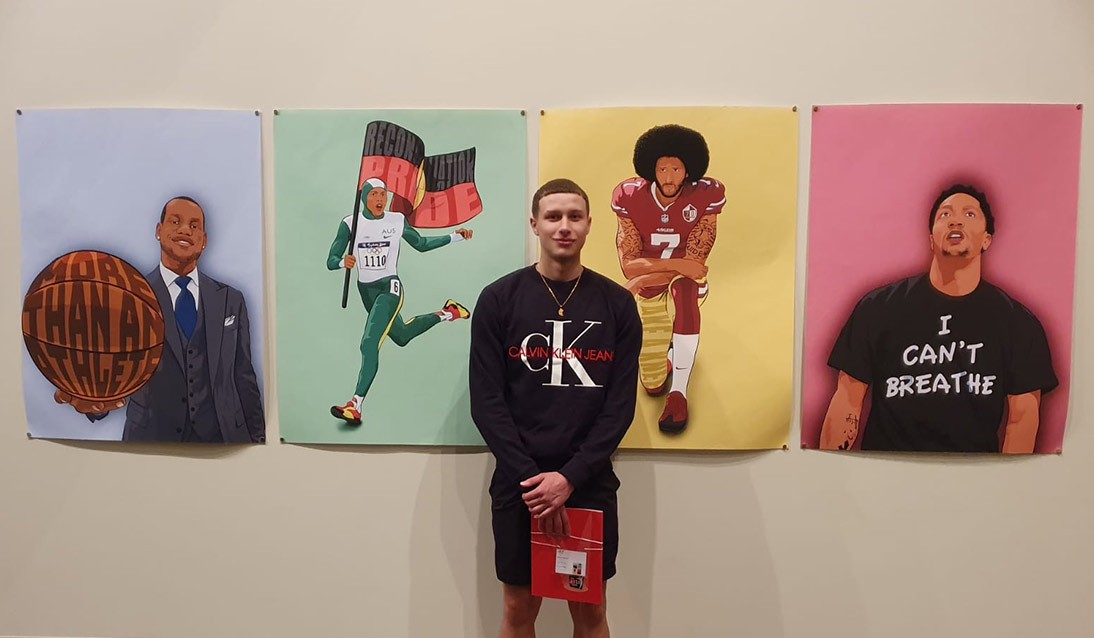
Westfields Sports High School 2019 HSC student Tomas Ramos with his works at ARTEXPRESS at the Armory.
When Sydney marks the 20th anniversary of the 2000 Olympics later this year, the works of a Westfields Sports High School 2019 HSC student will become synonymous with the occasion. Tomas Ramos has been commissioned to create a series of banners that are due to be installed this week and will be displayed throughout Sydney Olympic Park during the celebrations.
His first ‘professional commission’ came after his HSC major work was selected for ARTEXPRESS at the Armory, the largest of the exhibitions of artworks by HSC students.
Tomas’s major work, ‘More than an athlete’ shows four sporting superstars who have used their status to further a political view.
The work includes an iconic image of Cathy Freeman carrying the Aboriginal flag during her lap of honour after winning gold in the 400m at the 200 Olympics.
It also features US basketballers LeBron James and Derrick Rose, who work in the area of social disadvantage, and American football player Colin Kaepernick, who chose to ‘take the knee’ during the playing of the US national anthem as a protest against racial inequality.
Tomas, a State level basketballer who hopes to secure a sports scholarship to the US later this year, said he was stunned by the reception to his work.
“On the opening night of the exhibition, as we were going in I saw copies of my artworks outside being used as the main advertising – they had big banners featuring my works and it was a good surprise,” he said.
“A couple of weeks after I got a call and was asked about making the banners for the Olympics anniversary.”
Tony Nesbitt, Sydney Olympic Authority Manager, Events and Activation, said Tomas’ artwork ‘More than an athlete’ “resonated strongly” with the Sydney Olympic Park.
“In particular, the image of Cathy Freeman proudly bearing the Aboriginal flag during her victory lap spoke directly both to a key moment in the Park’s history and our ongoing commitment to Reconciliation with Australia’s First Peoples,” Mr Nesbitt said.
He said Tomas had been commissioned to create six graphic designs - including the Cathy Freeman image from ARTEXPRESS at the Armory - that evoke key stories from “the best Games ever”.
“Through this initiative, we continue our commitment to arts education in NSW by showcasing the talent of a public school HSC student to celebrate defining moments in Sydney Olympic Park’s ongoing story.”
Tomas said it felt good to gain a formal commission as an artist, particularly given the profile of the event.
As an aspiring professional athlete Tomas said although he wasn’t born when Freeman won gold he had included her in his body of work because “I feel like she’s iconic in Australian sport and she spoke out for Aboriginals”.
“Most of the time when athletes try to speak out on anything to do with politics they get trashed by the media,” Tomas said.
Through his artwork he wanted to highlight that some of sport’s most bankable stars were using their position as a platform for change.
“I feel like everybody has a voice and they should speak out,” he says, adding that the example of sportspeople such as Freeman and LeBron “gives you confidence in a way to show yourself and have a voice”.
While his main ambition is to succeed as a professional basketballer the success of his art has given the shooting guard an alternative career path.
“The main thing I want to do is basketball, but if that doesn’t work out I will study graphic design at college and maybe move on with that.”
ARTEXPRESS at the Armory 2020 can be viewed virtually.
CSIRO Parkes Radio Telescope Added To National Heritage List
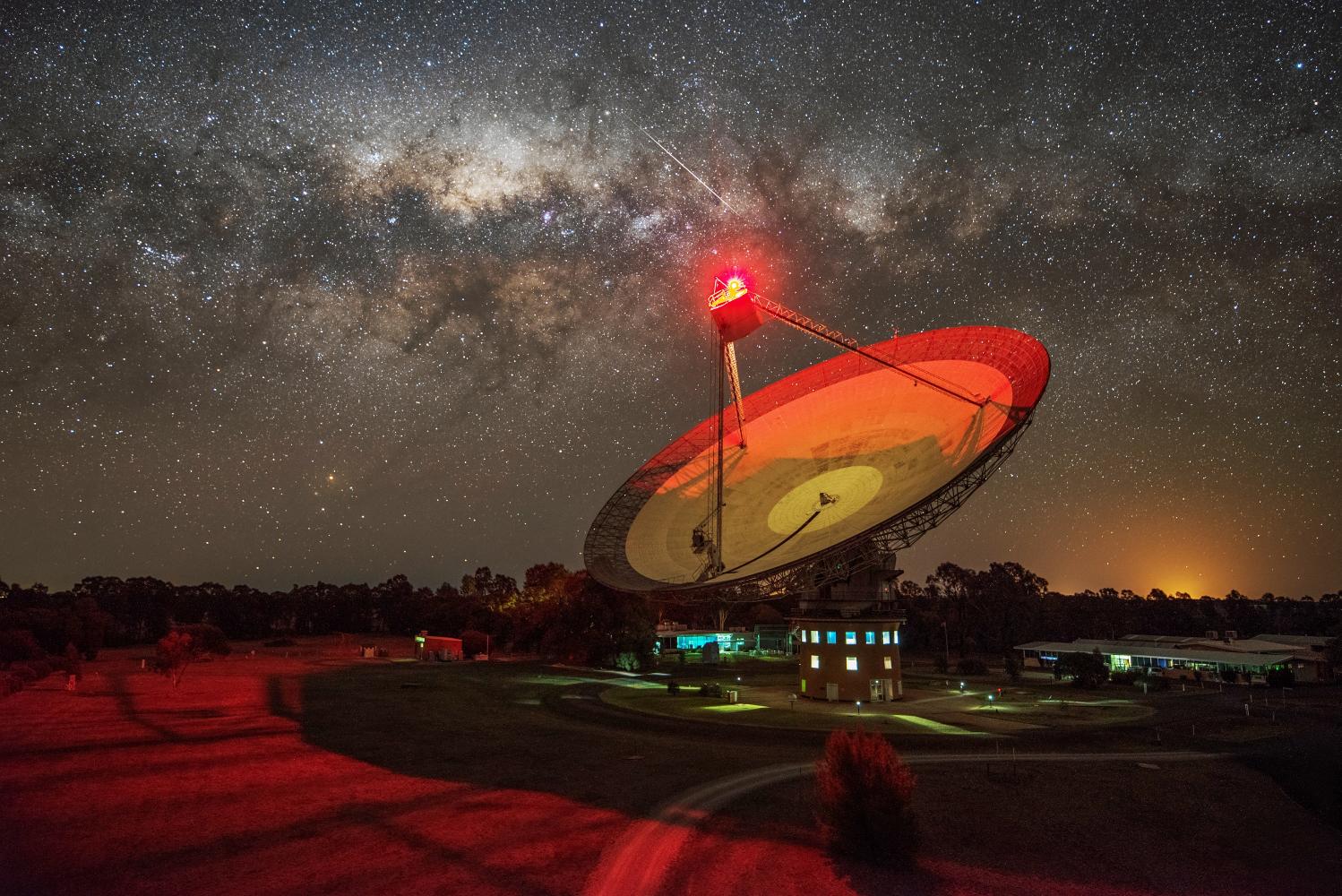
The iconic Parkes radio telescope, otherwise known as The Dish, has been officially recognised for its contribution to Australian astronomy and humankind’s understanding of the Universe with its addition to the National Heritage List.
Minister for the Environment Sussan Ley made the announcement on Monday August 10th, 2020 that the telescope, owned and operated by Australia’s national science agency – CSIRO, is the first functioning scientific instrument to be added to the list.
By the late 1940s and early 1950s it was clear that the days of improvisation in radio astronomy were over, and that the next steps had to be big ones. In turn, this implied that much planning and lots of money would be required. At the time the two strongest countries in radioastronomy were the UK and Australia.
Australia got off to a good start in radio astronomy just after the Second World War. Staff of the CSIRO Radiophysics Laboratory (later the Division of Radiophysics) made use of radio-receiving antennas and other equipment left over from war-time, and turned them from their original purpose of receiving man-made radio signals to studying the natural radio waves produced by objects in the cosmos. The equipment located on the coast at Dover Heights in Sydney was rough and ready, and often improvised (see Radio astronomy at Dover Heights). But by the late 1940s and early 1950s it was clear that the days of improvisation were over, and that the next steps had to be big ones. In turn, this implied that much planning and lots of money would be required.
The first proposal was to build a large air-warning antenna that would double as a radio telescope. The Radiophysics Laboratory had close links with the Royal Australian Air Force (RAAF): during the war it had worked for all three services (army, navy and air force) and just after the war it was advising the RAAF on radar and navigation equipment, including air-warning equipment. At the time it seemed that the best way to extend that technology would be to build larger radio-receiving antennas. Radiophysics staff began thinking in terms of dimensions of hundreds of feet. At one stage they proposed to build a wooden antenna, 100 feet in diameter, rotating on a track and costing all of A£365. A large antenna like this could be used for both air-warning and for radio astronomy. But the RAAF was even more strapped for cash than CSIRO, and had no money to put towards such a project.
In 1952 it became clear that CSIRO too had no chance of getting a large capital sum to fund such an instrument. Some way had to be found to squeeze it out of the existing Radiophysics budget. So a proposal was drawn up for a cylindrical antenna, lying on its back, 1 000 feet long and 200 feet wide, made up of five adjoining elements. Each element would be 200 feet square, lying on an east-west line and scanned by cable and winches in the north-south direction. The total cost was to be about A£125 000, spread over five years. But once again the answer was no.
Unlike Australia, the USA had been slow to take up radio astronomy after the Second World War. The leader of the Division of Radiophysics, Dr EG (Taffy) Bowen, had many contacts in science and industry in the USA, and he urged them to help the USA to take up radio astronomy, mainly by building a large radio-receiving antenna. The proposal fell on receptive ears. The Division of Radiophysics wrote a detailed specification for such an instrument and a program of scientific activities that it could be used for. It was tacitly understood that this telescope would go ahead at the California Institute of Technology, and that the Carnegie Corporation might provide up to US$5 million for it. [1.]
Given the UK were building the large 250-ft (77-m) telescope at Jodrell Bank, the Chief of the CSIRO Division of Radiophysics, Dr EG (Taffy) Bowen, proposed that Australia needed one as well.
"Radio Telescope"
LONDON, Sun.—A record-size "radio telescope" is to be built in Britain to explore the mysterious invisible "radio stars," whose existence was not suspected until scientists found they were sending out radio waves which could be picked up on the earth. "Radio Telescope" (1952, April 28). The Canberra Times (ACT : 1926 - 1995), p. 4. Retrieved from http://nla.gov.au/nla.news-article2853869
About the time that these plans for a telescope were being drawn up, the large American foundations such as Ford, Rockefeller and Carnegie were changing their emphasis in supporting science, giving less to the US and more to other parts of the world. Vannevar Bush (President of the Carnegie Corporation) and Alfred Loomis (a Trustee of both the Carnegie Corporation and the Rockefeller Foundation) suggested that the proposed large telescope be built in Australia, with financial assistance from the USA.
The Carnegie Corporation had accumulated US$250 000 that it was obliged, for certain reasons, to dispose of in the British Commonwealth, and the Corporation’s trustees granted this money towards the construction of a telescope in Australia. This grant was followed by another donation from the Rockefeller Foundation.
The last hurdle was that the overseas bodies required that their own grants be met, dollar-for-dollar, by the Australian Government. The Australian Government rose to the occasion (the money actually came from other CSIRO sources) and contributed to not only the capital costs but the running costs as well. A year later the Rockefeller Foundation gave a further US$130 000. The telescope now had an assured future and work began on ideas of what a giant radio telescope should look like.
New Rockefeller Grant For Giant Telescope
MELBOURNE, Thursday, —The Rockfeller Foundation of New York has made a further donation of 107,000 dollars (about £48,150) to wards the cost of the giant radio telescope being built for the C.S.I.R.O. at Parkes. The donation was announced by the Minister-in charge of the C.S.I.R.O., Mr. Casey, to-day.
The foundation made its first donation of 250,000 dollars towards the cost of the telescope about four years ago. Since that time the total cost estimates have risen from £500,000 to £800,000.
The construction of the huge instrument is now well advanced and the whole project will be completed in 1961.
The main component is a steel dish-shaped bowl 210 ft. in diameter which will pick up radio signals from the outermost fringes of the universe. New Rockefeller Grant For Giant Telescope (1960, January 1). The Canberra Times (ACT : 1926 - 1995), p. 4. Retrieved from http://nla.gov.au/nla.news-article103073916
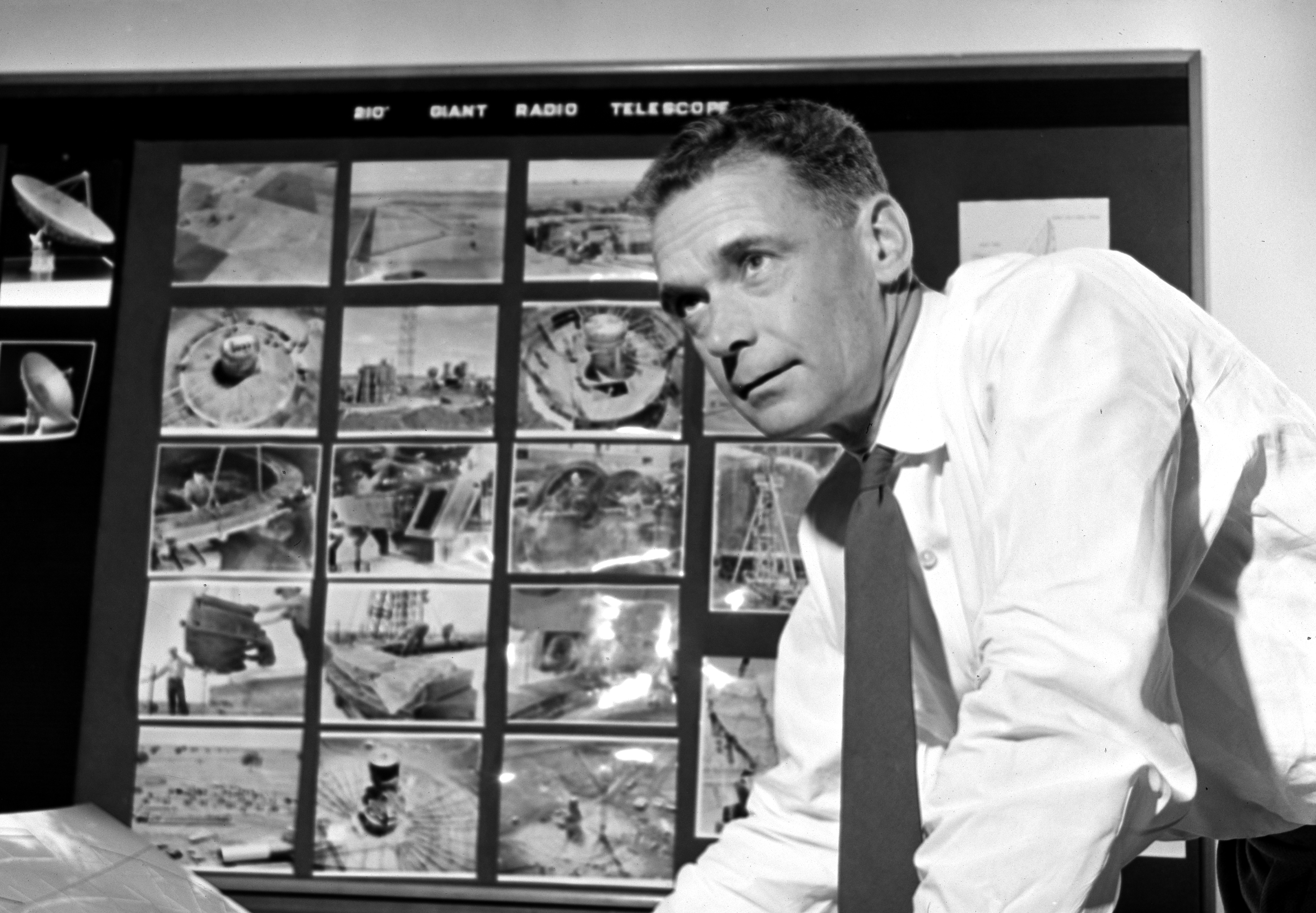
Dr E.G. 'Taffy' Bowen was CSIRO’s Chief of the Division of Radiophysics and the driving force behind the Parkes radio telescope. Credit: CSIRO
In 1954 there was no-one in Australia capable of building the Parkes telescope or even doing the engineering design. So Joe Pawsey went to Britain for advice (it was thought to be cheaper than the USA). The first person consulted was Barnes Wallis (of ‘dambusters’ fame), who was then the Chief Engineer of Vickers. Wallis was quite excited by the challenge of the proposed telescope but warned that: the design of a giant radio telescope is a venture into the unknown.
Taffy Bowen was very conscious of the dangers of this new venture and was also very good at seeking expert advice. He formed a Technical Advisory Committee (TAC) to help select the consultants for the design study, to specify exactly what they had to do and to assess their recommendations. The TAC included a distinguished English engineer John Roderick, Professor of Civil Engineering at Sydney University and Arthur Wills, an experienced engineer at the Aeronautical Research Laboratories in Melbourne.
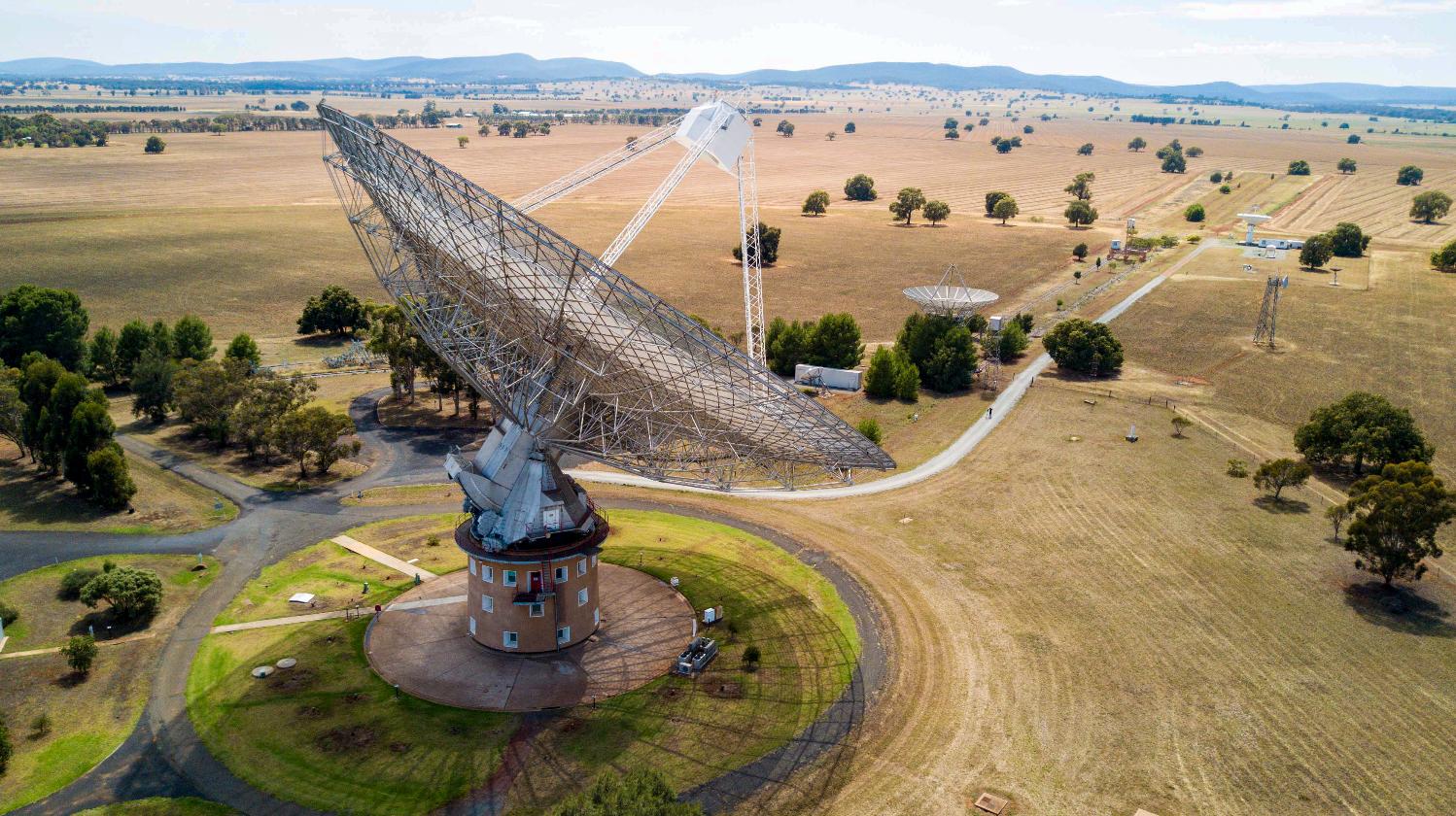
Art Of Ageing 2020 Exhibition Coming To Warringah Library In Spring
‘I began a mechanical apprenticeship at 40 years of age at the local shire where I worked for 10 years. That’s where I learnt to weld. I started going to the back shed and building things. I entered my first sculpture in the Farm Art Show in Lockhart, 10 years ago, where I won. I pretty much entered every year since then.’
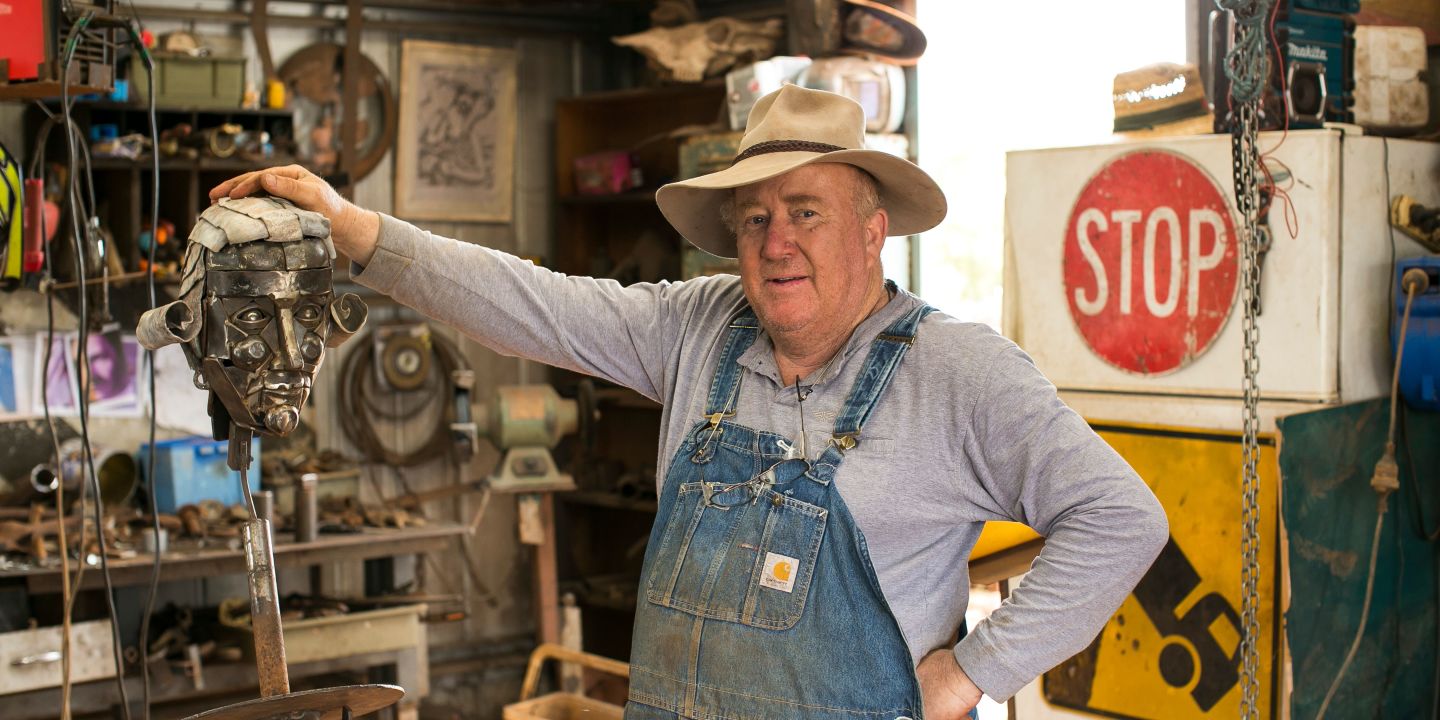
It's hard to admit we're lonely, even to ourselves. Here are the signs and how to manage them

The COVID-19 pandemic has drawn attention to loneliness in Australia.
This is especially so as Melburnians entered the strictest lockdown to date. Meanwhile, the rest of Australia braces for the possibility of a second wave and people are adapting to new habits and restrictions.
This has disrupted our social routines, and in many cases has reduced the number of people we interact with. This makes it harder to maintain meaningful social connections, resulting in loneliness.
But sometimes it can be difficult to tell if you’re feeling lonely or feeling something else. And many people are reluctant to admit they’re lonely for fear it makes them seem deficient in some way.
So what are the signs of loneliness? And how can we recognise these signs and therefore manage them?
Read more: Lonely in lockdown? You're not alone. 1 in 2 Australians feel more lonely since coronavirus
I’m Not Lonely…
Loneliness is complex. Some people can feel lonely despite having extensive networks, while some others might not, even if they live alone. There are many factors behind this, and the COVID-19 pandemic is another significant one.
Social restrictions during the pandemic mean we are more reliant on existing relationships. People who enjoy brief but multiple social interactions in their daily routine, or simply like being around others, may now find it harder to keep loneliness at bay.
When researchers ask people whether they’re lonely, some deny or reject the idea. But when asked in a different way, like whether they want some company, some of those same people would say yes, they would like company.
This is because there’s a social stigma to loneliness. We often think it is somehow our own fault or that it reveals some personal shortcoming. Loneliness evokes a particularly vulnerable image, of someone living alone with no one around them.
One survey also found men are less likely to say they’re feeling lonely, although this research was published before COVID-19.
“Max”, aged 21, was interviewed as part of an upcoming project being done by Ending Loneliness Together, an organisation that addresses loneliness in Australia. He has experienced periods of loneliness, and said:
I think specifically for men, [they] lock themselves away because they don’t know how to verbalise that feeling. It demonstrates the real disparity in the way in which we expect our men to engage in their emotions.

Because of these misconceptions, many who are lonely will overlook their own emerging signs of loneliness in the hope these feelings will go away once they are around people. But seemingly logical solutions like making more friends or knowing more people may not help, if you perceive these relationships to be unhelpful, neutral, ambivalent, or even sources of conflict.
Nevertheless, ignoring growing levels of loneliness will increase our risk of developing poorer physical and mental health.
Signs You Might Be Lonely
Loneliness is a normal signal to connect with others, so it’s unlikely you’ll be able to rid yourself completely of lonely feelings during this time. Instead, we should aim to manage our loneliness so it doesn’t become severely distressing.
More often than not, we might not be willing to admit even to ourselves that we’re feeling lonely. The COVID-19 pandemic may be a trigger, but there is a range of factors that can lead you to feel lonely, sometimes without even realising.
This can make it hard to be consciously aware of any loneliness you might be experiencing, particularly if the pandemic has left you feeling busier and more stressed than usual.
Here are some signs you might be feeling lonely. To a certain extent, you feel that:
you are not “in tune” with others
your relationships are not meaningful
you do not belong
you do not have a group of friends
no one understands you
you do not have shared interests with others
there is no one you can turn to.
It’s important to remember, though, not all of these may relate to you and you may experience these in varying degrees.

How To Manage Your Loneliness
Because of the complexity of loneliness, there is no one-size-fits-all solution. To find the best solution for you, reflect on your personal preferences, previous experience, and your capacity to reach out to your social networks.
During the pandemic, the solutions you select will differ depending on the social restrictions in your state. Even under the strictest social restrictions (in Melbourne), some of us have been fortunate to have a friend or a neighbour in our area with whom we can walk and chat while still adhering to public health directives. For others, getting in touch via Zoom or a phone call may be the only option.
For those who can, establishing shared goals or activities with friends, family, or colleagues can be helpful. These provide positive social support and facilitate a sense of achievement when meeting those goals. This might include setting self-care goals such as exercise, meditation, cooking, hobbies, or learning new skills. But equally, it’s not a sign of “failure” if you don’t do these things.
Friendships are good for our health, but making a new friend can be taxing for some people.
Instead, perhaps think about how you can work on existing relationships. Pick what feels right and is feasible for you. If improving the ties you already hold is all you can do, focus on this. And if you are reaching out to people outside your familiar network, it doesn’t have to be confronting. A simple hello is a small step towards more meaningful interactions in the future.
Social restrictions including isolation, quarantining, and social distancing are public health measures we’ve become acquainted with since the onset of COVID-19. Although these restrictions modify our social interactions physically, they don’t mean we can’t stay meaningfully connected to each other. This is why many prefer the alternative term “physical distancing”.
We can, and should, stay socially connected while being physically apart.
Read more: Loneliness is a social cancer, every bit as alarming as cancer itself ![]()
Michelle H Lim, Senior Lecturer and Clinical Psychologist, Swinburne University of Technology
This article is republished from The Conversation under a Creative Commons license. Read the original article.
Addendum - Monday August 17, 2020: from the Dept. of Why Not?:
Reason: Breeding season is September to December for these wonderful birds. Rainbow lorikeets will generally mate for life, utilising hollows found in old-growth trees to nest. The female will incubate 1-3 eggs, they can lay up to 3 clutches a year.
This is a couple - the one doing the wing flaps is the male, being territorial, the female is the one making the 'dove eyes'.
If you look around you at present you see such displays and others, such as sea eagles doing aerial mating displays, or a similar mid-air 'tiff' between little corellas, for example, - all vying for the attention of a female. You are a witness to all this happening all around you. You too are present.
What a gift this time of year is.
Have a look around you. Connect.
Want to see a therapist but don't know where to start? Here's how to get a mental health plan

Last week, the Australian government announced it will provide ten extra Medicare-subsidised psychological therapy sessions for Australians in lockdown areas due to COVID-19.
In such a stressful time, many people are experiencing poorer mental health, and some need additional support. However, our mental health system is complex and fragmented, so it can be challenging to find the care you need.
Here’s how to start seeing a therapist if you never have before.
What Is A Mental Health Treatment Plan?
Under Medicare, you can already access ten subsidised sessions per calendar year with a registered psychologist, social worker or occupational therapist. Twenty sessions are now subsidised “for anybody who has used their initial ten services in a lockdown area under a public health order,” said Federal Health Minister Greg Hunt. Currently this includes all of Victoria.
But to get access to these sessions, first you need to get a mental health treatment plan from your GP. This involves an assessment of your physical and mental health, and a discussion of your particular needs. The GP then helps you decide what services you need.
All GPs who write mental health treatment plans have undergone additional training in mental health. There are also plenty of GPs with further interest and expertise in this area. It can be helpful to ask for recommendations from friends and family if you are unsure who to see.
Physical and mental health issues frequently overlap, so a visit to a GP is an opportunity to assess any physical issues that may impact mental health as well. The GP should explore a person’s strengths and vulnerabilities, before agreeing on a plan for care.
Generally, this process takes 30-40 minutes, so it’s important to book a longer consultation with your doctor. At the end of this consultation, you can have a copy of the plan, and it’s also sent to the therapist of your choice. Once the mental health plan is billed to Medicare, you can get subsidised sessions with your preferred therapist. You will need to make the appointment with the therapist, but GPs or practice nurses will often help make this appointment for patients who are feeling too unwell to manage this phone call.
Using Telehealth
Telehealth enables you to get care from your GP by phone or video. The Medicare requirements of telehealth are changing rapidly, so check when you make your appointment to see if telehealth is available and to make sure you will be eligible for a Medicare rebate for this consultation.
At the moment, to get a Medicare rebate for telehealth, you must have seen the GP in their practice face-to-face at some point in the past 12 months.
But this requirement doesn’t apply to:
children under 12 months
people who are homeless
patients living in a COVID-19 impacted area
patients receiving an urgent after-hours service
patients of medical practitioners at an Aboriginal Medical Service or an Aboriginal Community Controlled Health Service.
So if you live under the Victorian lockdowns, you can get a mental health care plan via telehealth, even if you have not seen the GP before.
Once you’ve got your care plan, you can do the therapy sessions via telehealth too. And you can now claim them under Medicare (though this wasn’t the case before COVID-19).
Read more: Coronavirus has boosted telehealth care in mental health, so let's keep it up

Choosing A Therapist
Your GP can help you choose a therapist, but it’s important to think about what you need from a psychologist. Psychological care can range from coaching when life is particularly challenging, to deep and complex work helping people manage mental health disorders or trauma.
Also consider the sort of person you prefer to see. Some people prefer practitioners from a particular cultural group, gender or location. You may have a preference for a very structured, problem-solving style, or you may want someone with a more conversational style. You may also have a preference for the type of therapy you need. If your GP can’t recommend someone appropriate, or if you are having trouble finding someone who is available to meet your needs, the Australian Psychological Society has a searchable database of therapists.
Psychologists, occupational therapists and social workers must be registered under Medicare to provide these services, so it’s important to check this with the receptionist when you make your appointment. The Medicare rebate varies according to the qualifications of the practitioner, and a psychologist’s fees may be well above the rebate, so clarify your expected out-of-pocket expenses when you make an initial appointment.
A clinical psychologist has additional training, and will give you a rebate of around $128, whereas a general psychologist has a rebate of around $86. Remember that a psychologist may charge well above the rebate, so you may be out of pocket anywhere from nothing to over $200.
Read more: 5 ways to get mental health help without having to talk on the phone
If you decide seeing a therapist under a mental health plan is not the right option for you, there are some alternatives. Some non-government organisations, like Headspace, provide counselling services through Medicare for no additional cost, as do some schools. Some workplaces also have psychological options like the Employee Assistance Program.
Some people benefit from online programs that teach psychological techniques. Head to Health also provides a searchable database of evidence-based sites to explore. Most are free or very low cost.
If you are very unwell, local mental health services attached to public hospitals can provide crisis support and referral.
These are difficult times.
It’s important to at least discuss your situation with someone you trust if you’re having difficulty sleeping, your mood is affecting you or your family, or you’re having frightening or worrying thoughts. Your GP is a good, confidential first port of call.
If you or someone you know needs assistance, contact Kids Helpline on 1800 55 1800, Lifeline on 13 11 14, or Beyond Blue on 1300 22 4636.![]()
Louise Stone, General practitioner; Clinical Associate Professor, ANU Medical School, Australian National University
This article is republished from The Conversation under a Creative Commons license. Read the original article.
Reclaim Her Name: why we should free Australia's female novelists from their male pseudonyms

The Australian poet Gwen Harwood used to submit poems to literary journals under both her own name and a male pseudonym, Walter Lehmann. Furious that the latter poems were more favourably received, in 1961, she sent two new sonnets to The Bulletin, penned by Lehmann, containing coded messages of abuse.
Her elaborate literary hoax became front-page news. But Donald Horne, the magazine’s editor, poured scorn on the female poet. “A genuine literary hoax would have some point to it,” he said.
In 2020, just in case this “point” is still not sufficiently clear, the Women’s Prize for Fiction has just marked its 25th anniversary by publishing 25 literary works by female authors with their real names on the cover for the first time.
Some of the books, like Middlemarch, written by Mary Ann Evans under the pen name George Eliot, are well-known, ranking among the greatest novels in English. Others have been dragged off dusty book shelves and placed in the spotlight once again.
Mary Bright, writing as George Egerton, openly talks about women’s sexuality in Keynotes, published in 1893. Ann Petry, best known as the author of The Street, the first book by an African American woman to sell more than one million copies, appears as the author of Marie of the Cabin Club, her first published short story penned under the pseudonym Arnold Petri in 1939.
Also included is Violet Paget, whose ghost story A Phantom Lover, was published under her pen name Vernon Lee. And Amantine Aurore Dupin, whose Indiana is better known for being written under the pseudonym George Sand.
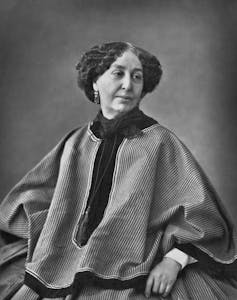
For these authors, using a pseudonym was not just about slipping their work past male publishers who did not think publishing was a place for a woman. It was also about more diffuse forms of gender prejudice.
Women writers – witheringly dubbed “lady novelists” in the 19th century – also worried that their work would be marginalised as “women’s writing”; as domestic, interior, “feminine” and personal, as opposed to “masculine” themes such as history, society and politics that are, according to social norms, deemed to be more serious and culturally significant.
As George Lewes, Mary Ann Evans’ friend and life partner, put it, “the object of anonymity was to get the book judged on its own merits, and not prejudged as the work of a woman”.
“A Bald-Headed Seer Of The Sterner Sex”
In Australia, the Harwood hoax has often been relegated to the status of a literary curiosity, or mildly amusing cultural footnote. But Harwood was far from alone in feeling a sense of frustration with the male-dominated literary world.
In choosing a male pseudonym, Harwood joined the ranks of other bold and adventurous Australian women, such as Stella Maria Sarah Miles Franklin (1879–1954). Franklin’s male pseudonym has been given to Australia’s most illustrious literary award, but her work – including My Brilliant Career (1901) – has not been published under her real name. The Stella Prize, established in 2013, marked this omission.

Indeed, Stella explicitly asked her publisher to delete the word “Miss” and use the name “Miles” in the hope that her work would be better received as the work of a man. “I do not wish it to be known that I’m a young girl but desire to pose as a bald-headed seer of the sterner sex,” she said.
So too, Ethel Florence Lindesay Richardson (1870–1946), also known as Mrs Robertson, is only recognisable to Australian readers under the pen name Henry Handel Richardson.
Ethel used the male pseudonym to publish her literary works – including the classic women’s coming of age story, The Getting of Wisdom (1910) – because she wanted to be taken seriously as a writer.
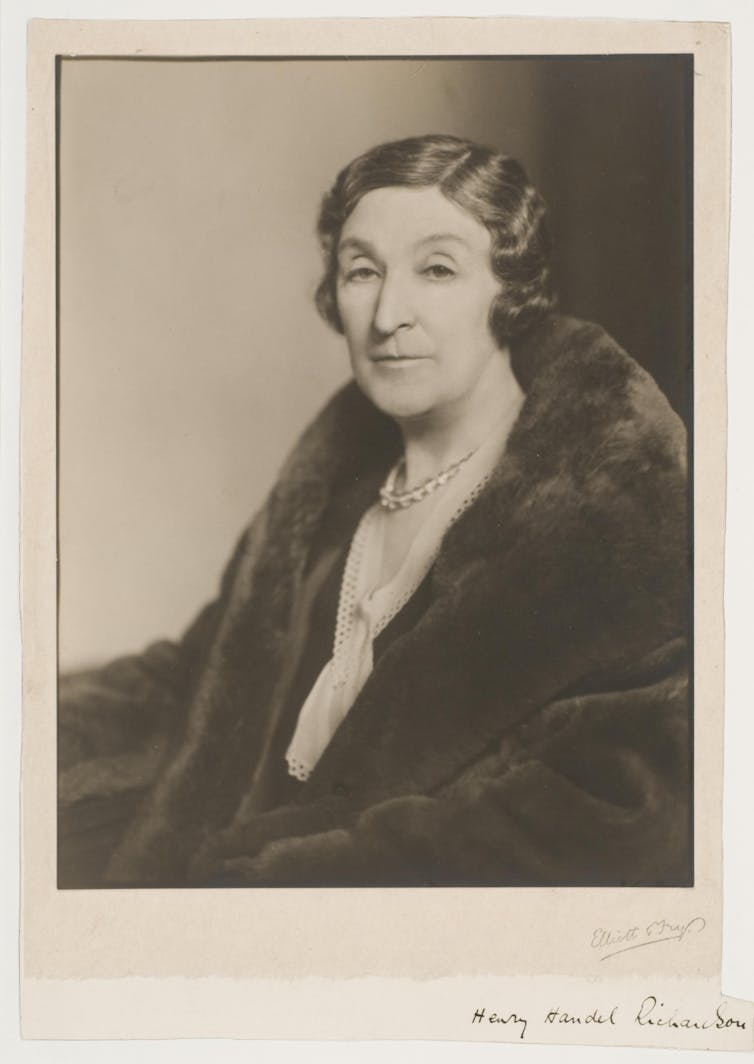
Ethel’s gender identity was kept a secret for many years. As late as 1940 she wrote that she had chosen a man’s name because,
There had been much talk in the press of that day about the ease with which a woman’s work could be distinguished from a man’s; and I wanted to try out the truth of the assertion.
The sexually ambiguous pen name M. Barnard Eldershaw was also used by 20th century Australian writers Marjorie Barnard and Flora Eldershaw who, working in the 1920s to 1950s, penned five novels together, including Tomorrow and tomorrow and tomorrow, as well as short stories, critical essays and a radio play.
There were, of course, Australian women in the late 19th century who published under their own names, and paid the penalty.
They included Rosa Praed, Ada Cambridge, and Tasma, the pen name of Jessie Couvreur. Many were denigrated as “lady novelists” whose “romances” were witheringly labelled derivative, commercial or frivolous. And it’s likely their names are no longer recognised, except by experts.
Rosa and Ada, Stella and Ethel, for some reason, do not sound as weighty or serious as Henry and Miles, or George and Vernon. But this will not change until Australian publishers take note. It’s time to republish these Australian women under their own names.![]()
Camilla Nelson, Associate Professor in Media, University of Notre Dame Australia
This article is republished from The Conversation under a Creative Commons license. Read the original article.
The Australian's racist Kamala Harris cartoon shows why diversity in newsrooms matters

A Johannes Leak cartoon published in The Australian today, in which US Democratic presidential candidate Joe Biden is depicted calling his vice-presidential running mate Kamala Harris a “little brown girl”, has drawn widespread condemnation.
Several Australian politicians, including former Prime Minister Kevin Rudd, have described the cartoon as racist, as have a suite of journalists and media observers (ex-Labor leader Mark Latham said he loved it).
I am firmly in the camp that thinks this is a racist and sexist cartoon. As a journalism lecturer with an ongoing interest in the diversity of Australian media, I think today’s outrage shows there is still much work ahead in making newsrooms less overwhelmingly white.
Context Matters
My own view is this cartoon should never have been published, and it has no place in Australian media. I’m glad to see Australian politicians and public figures coming forward and saying it’s unacceptable.
The Australian’s editor-in-chief, Chris Dore, told Guardian Australia that Leak’s cartoon “was quoting Biden’s words” from a tweet the US politician issued this week about young girls drawing inspiration from Harris.
“When Johannes used those words, expressed in a tweet by Biden yesterday, he was highlighting Biden’s language and apparent attitudes, not his own,” Dore told Guardian Australia. “The intention of the commentary in the cartoon was to ridicule racism, not perpetuate it.”
I think Dore’s explanation is unconvincing. Biden’s tweet is clearly referring to girls who look up to Harris. It’s a massive sidestep to say Biden is talking down to his recent vice-presidential pick. The contexts are totally different.
I cannot imagine The Australian published today’s cartoon without knowing it would provoke outrage - and that this outrage would delight parts of their audience. Part of the delight is in the outrage it provokes.
Read more: Australia's media has been too white for too long. This is how to bring more diversity to newsrooms
Australia Looks Backward
It’s hardly the first time, either, that a racist cartoon published in our mainstream media makes us look backward and out of step as a country.
Think back to the embarrassing episode of blackface on Hey Hey It’s Saturday in 2009, or Johannes Leak’s father Bill’s cartoons in the past, and the Herald Sun’s widely condemned Mark Knight cartoon depiction of Serena Williams in 2018. (It should be noted, the Press Council ruled the latter “non-racist” and Knight defended it - unconvincingly - by saying he had “absolutely no knowledge” of the Jim Crow-era cartoons of African-Americans.)
These examples show the work of making sure Australian newsrooms are diverse is ongoing.
There’s still so much room for improvement when it comes to editorial decisions, reporting and making sure we have a range of stories told about who we are as a country. That hasn’t been done well so far in Australia and cannot be done well while the media is largely dominated by white men.
As I wrote in an earlier Conversation article, despite a quarter of Australians being born overseas and nearly half having at least one parent who was born overseas, our media organisations remain blindingly white.
A 2016 PriceWaterhouseCoopers report found 82.7% of Australia’s media workers speak just one language, and speak only English at home. There’s a high prevalence of media workers in the inner Sydney suburbs, it found, concluding that a lack of diversity – in ethnicity, gender and age – is holding back industry growth.
Unless these trends are addressed, we will continue to see work like Leak’s cartoon making it through the gate.
Read more: The Herald Sun's Serena Williams cartoon draws on a long and damaging history of racist caricature
A Long History
There’s a long history of racist cartoons in Australian media. What’s different is the response. Today’s cartoon has blown up on Twitter — and yes, I realise it is a place closely watched by Australian politicians and media people but largely ignored by most Australians — but at least the online outcry allows some kind of accountability.
In the past, the media could publish racist cartoons without being called to account. These days, the pushback is manifesting in real time.
Should we all have just shaken our heads and ignored it? I don’t think so. Once something like that is published, the horse has bolted and you have to respond. I think collectively ignoring a racist cartoon won’t remove its prominence or significance.
We are forced to revisit this debate every time a racist cartoon or article is published, or a racist comment put to air. I hope that by revisiting it forcefully enough and by making these points enough times, the conversation moves forward and we can make some progress. I also hope racist cartoons are never published in Australia’s mainstream media again. But I won’t be holding my breath.
Read more: Racist reporting still rife in Australian media ![]()
Janak Rogers, Associate Lecturer, Broadcast Journalism, RMIT University
This article is republished from The Conversation under a Creative Commons license. Read the original article.
Researchers Unlock Secrets Of The Past With New International Carbon Dating Standard
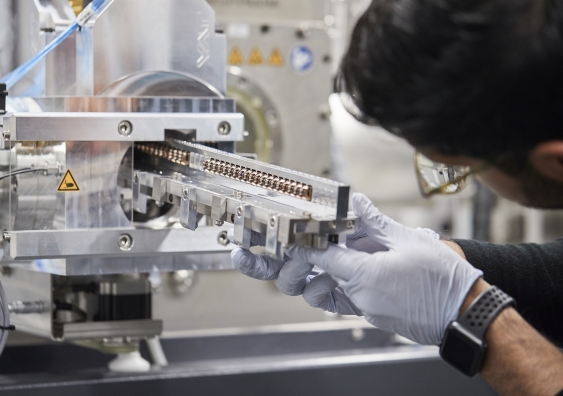
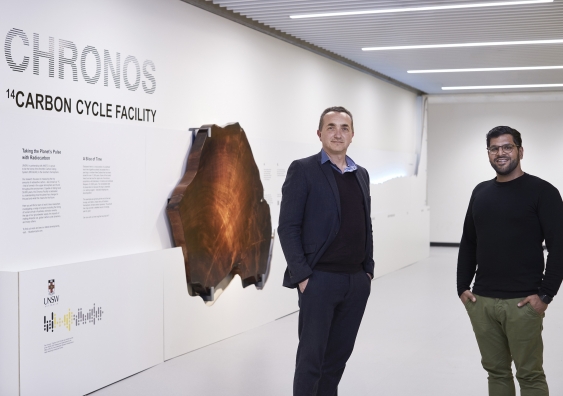
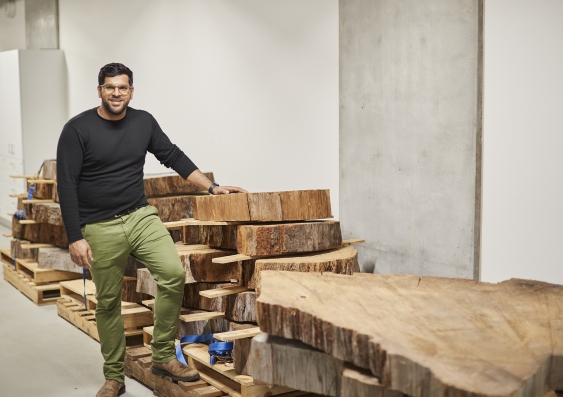
Seafood Study Finds Plastic In All Samples
Cricket Umpires Fumble On T20 Calls
$200 Million Wyong Hospital Reaches High Point
- a new emergency department
- a new intensive care unit
- a new psychiatric emergency care centre
- a new ambulatory paediatric unit
- a new and expanded medical imaging department
- a new and 28-bed medical assessment unit
- additional 60 inpatient beds with future expansion space.
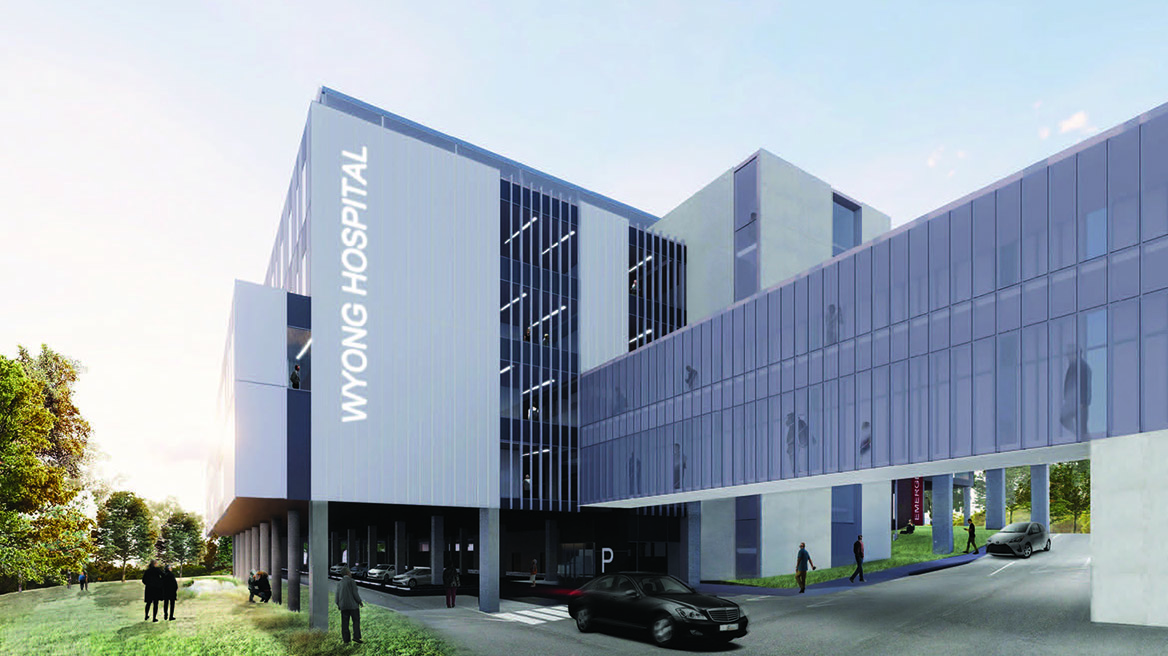
Disclaimer: These articles are not intended to provide medical advice, diagnosis or treatment. Views expressed here do not necessarily reflect those of Pittwater Online News or its staff.